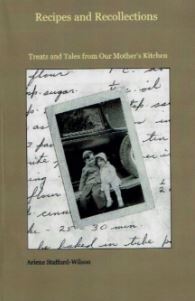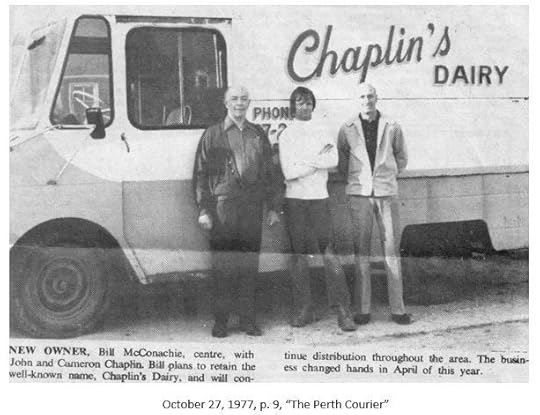Arlene Stafford-Wilson's Blog, page 20
June 3, 2023
‘Witching’ or ‘Dowsing’ for Water

I often wonder what went through our Mother’s mind, when Dad informed her that there was no indoor plumbing in the farmhouse, on the Third Line of Bathurst, where they would be living, after the war.
They purchased the farm from Dad’s aunt and uncle, partly with the help of a Veteran’s Grant, in 1946, when Dad returned from overseas.
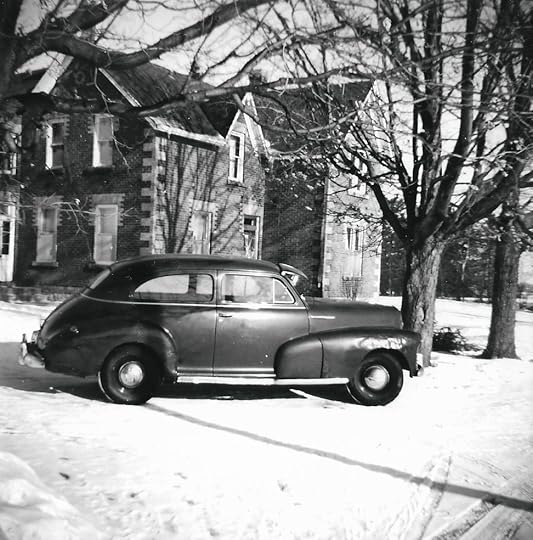
With two babies in diapers, I can’t imagine that my Mother was very happy at the prospect of drawing water from a well, with a hand-pump, a hundred yards from the house. There was a big cement cistern in the basement as well, which collected rain water, but that was just for washing, not drinking.
Water was often in short supply, and almost every year by summer’s end, the well was running dry. When Dad worked for Chaplin’s Dairy, in Glen Tay, he brought water home from the dairy at night, in big metal milk cans, to hold us over, for a while.
Drilling a well was an expensive project to undertake. People paid by the foot, and we’d all heard the horror stories about a neighbour or acquaintance, who had paid for drilling but had not ‘hit’ water in the process.
The practice in those days, back in the 1950s and 1960s, was to hire a ‘Switcher’, or ‘Diviner’, who would walk the property, and use a method called ‘Dowsing’. In fact, this was such a common practice at the time that I recall this technique being called by a few different names: Witching, Switching, and Divining, depending on who you were talking to.
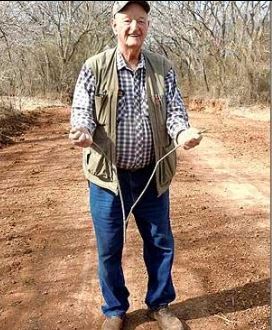
In many cases, a drilling company either had someone on staff, or knew a person with this skill, and brought them along to assist in finding the best spot to drill, where the water was closest to the surface.
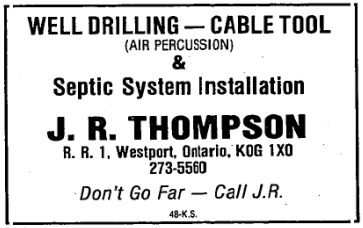
The Thompson brothers, Jerry and Connie drilled our well, and they hired Jack Dowdall from Glen Tay, to walk the land with the apple branch to detect the water.
“I remember when a new well was drilled, and when the men came with the dowsing stick. I can’t recall when they called it – I think a divining stick or rod, but it was used to find water.
I was there, and asked if I could try it. The men seemed amused, but he told me what to do. I can’t remember if I felt anything or not, but when he found the water, it seemed to pull him and the stick almost down to the ground.”
Jackie Stafford WhartonI recall in those days they used a willow branch, or apple branch, and fashioned it so that it had two short ends, and one long end. Willow or apple was used to create the strongest ‘pull’ to the water. I’ve also heard that peach branches, or hazel branches conduct water in the same way.
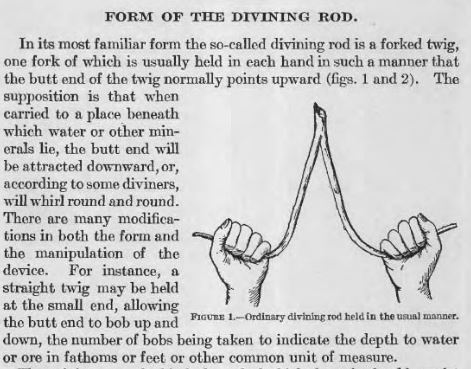
The practice of dowsing, goes back to the 15th century in Europe, where it was used not only to find water, but to detect metals as well.
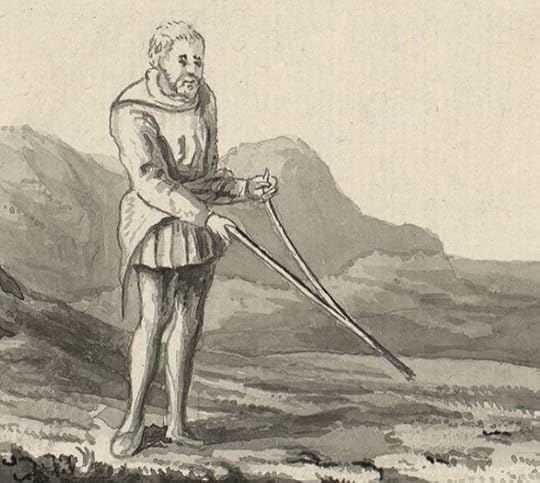
Dowsing or Witching was used extensively during the building of the railroad across Canada, to find drinking water for the crew, along the route.
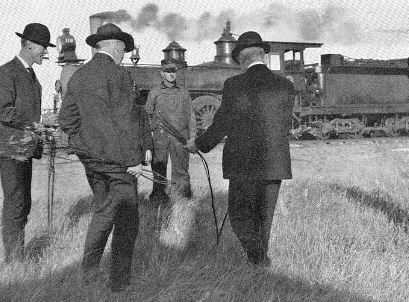
Farmers have used water-witching for generations, to determine the best place to dig their wells, and to find a source of drinking water for their cattle in a pasture.
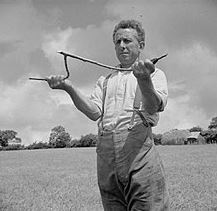
The practice continues to be used today, in some cities in Canada. Metal rods are used instead of the old-fashioned tree branches.
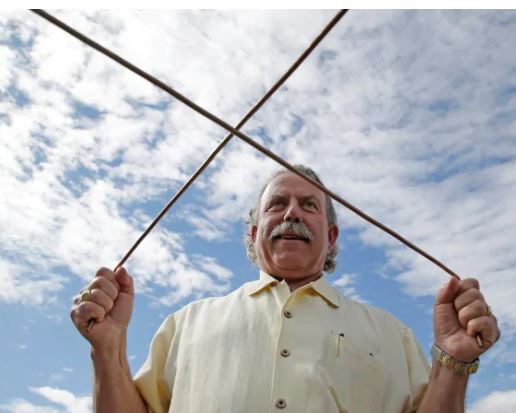
“The city (Ottawa) says it still routinely uses the age-old detection technique, also known as dowsing or water witching.
“Definitely the other technology works more consistently,” said Quentin Levesque, manager of what’s known as the city’s “locates group.”
“Should they have difficulties or troubles using the other equipment, the divining rod is there as well.”
The practice involves walking slowly over an area while holding one of the L-shaped rods in each hand. When the two rods cross, that’s supposed to signify the diviner is standing over water.”
Some Call it ‘A Gift’Can anyone use divining rods, or a willow switch to find water?
Some say it is a gift, and only those with this natural, intuitive, sensing ability can detect water. Some say that it doesn’t necessarily pass from father to son, or down through the family.
Some people claim that dowsing is a psychic ability, and some scoff and say that it is a learned ability, and that anyone can be trained to do it.
Whether it’s a gift, or something that can be learned, it’s still being practiced today by some, to pinpoint sources of water.
Were my parents happy when the well-witcher located the water in our yard, and the Thompson brothers drilled our well? They sure were!
Was it mystical or magical or other-worldly, when our Mother turned on the tap in the old house, and drinking water gushed out for the first time?
I’m sure to her, it was.
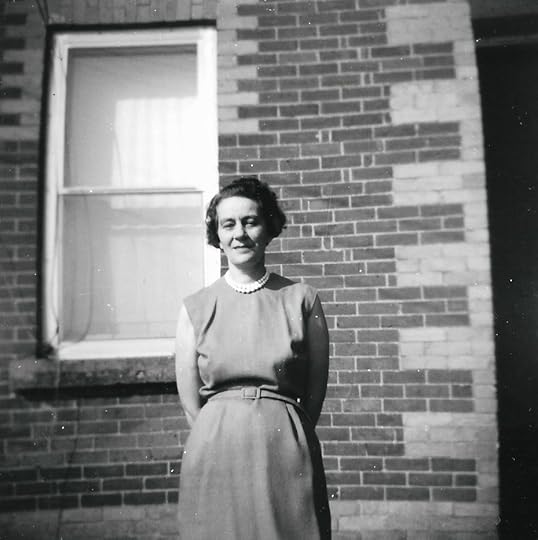
Jerry Thompson’s siblings: Vera (Percy Wills), Gordenia (Winfred Truelove), Marie (Maurice Wills), Gwen (Frank Turnbull), Connell ‘Connie’ (Phyllis North) Thompson, and Murray (Roberta Livingstone)Thompson.
Jack Dowdall’s siblings: Elizabeth (Clarence Donaldson), Violet (Lawrence Dixon), Lillian (William Kirkham), Laura ( Peter Kirkham), Edna (Joseph Kirkham), Mae (James McLaren), Edward (Mildred Foshay), Garnet (Margaret Stewart), William (Eleanor Gordon), George (Pearl Gordon), and Frank (Carmel Kirkham).
‘Meet’ Jerry, Connie and Jack, as they find the best spot to dig a country well, in the story: “Mysterious Ways of the Water Witcher”,
featured in the book – “Lanark County Collection” ISBN 978-0987-7026-78
available at The Book Nook in Perth https://thebooknookperth.com/Spark Books and Curios 76 Foster Street, Perth, Ontario https://sparkperth.ca/Mill Street Books in Almonte, https://millstreetbooks.com/
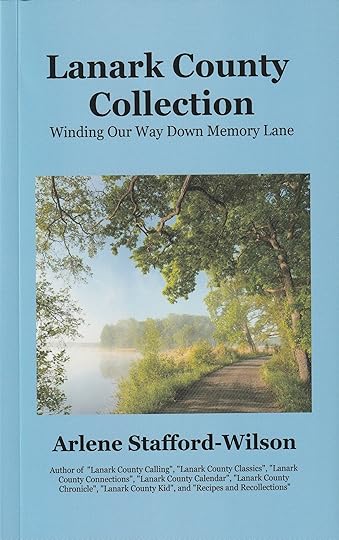
*
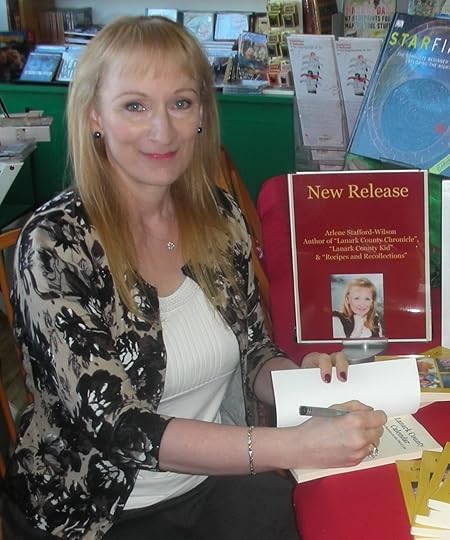
Arlene Stafford-Wilson
Member, Association of Professional Genealogists
Honorary Life Member, Lanark County Genealogical Society
Author of : “Lanark County Christmas”, “Lanark County Comfort”, “Lanark County Collection”, “Lanark County Calling”, “Lanark County Classics”, “Lanark County Connections”, “Lanark County Calendar”, “Lanark County Chronicle”, “Lanark County Kid”, & “Recipes & Recollections”
May 23, 2023
Inge-Va Inderwick Estate
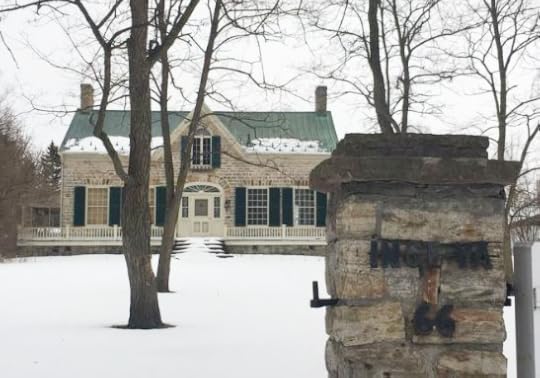
Inge-Va as it appeared in 2018
Inge-Va
Inderwick Estate
At 66 Craig St., in Perth, ON, Built in 1824, of local sandstone.
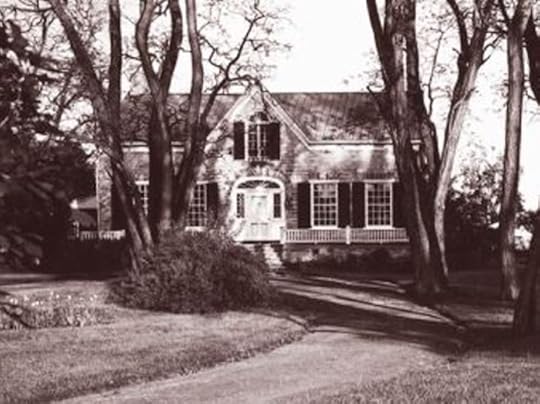
Who were the Owners?
HARRIS family

1824-1839 – Reverend Michael Harris, came to Perth from Dublin, Ireland, in 1819, the first Anglican minister in the district. He was married to Mary Elizabeth Fanning on September 21, 1819. Mary was the daughter of John Fanning and Sarah Wilson. On November 16, 1822, St. James Anglican Church, Perth, opened for their first service, and in 1824, the elegant stone home at 66 Craig Street was built for their family. Michael and Mary Harris had 11 children, Margaret, Mary, Clifton, Caroline, Harriet, Jane, Emma, John, Robert, Dora, and Michael.
In 1839 the house was sold to Perth lawyer, Thomas Radenhurst.
RADENHURST family
1839-1854 -Thomas Mabon Radenhurst, a prominent lawyer, son of Thomas Radenhurst and Ann Campbell; married his cousin Lucy Edith Ridout, daughter of Thomas Ridout of Toronto, and they had four sons and six daughters. He was elected to the Legislative Assemby for Upper Canada in July 1828, as the representative for Carleton County.
Many of Edith’s Children
Died in the House
“She lost three children to tuberculosis, one to typhoid, and one to drowning.“
Edith Radenhurst, was widowed in 1854, at the age of 42, and continued to live in the house. Between 1855 and 1873 she lost three of her 10 children to tuberculosis, one to typhoid and one to drowning. Mary, died age 33, Frances died age 15, Charles died age 27, Edith died age 30, Thomas died age 11, and Catherine died age 26.
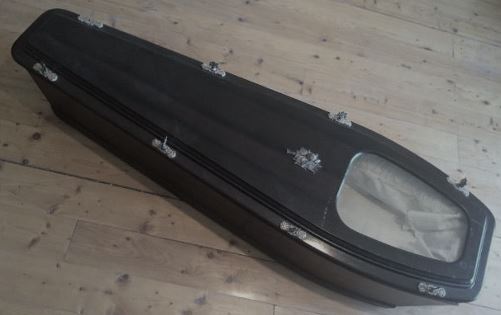
Child’s coffin, of that time
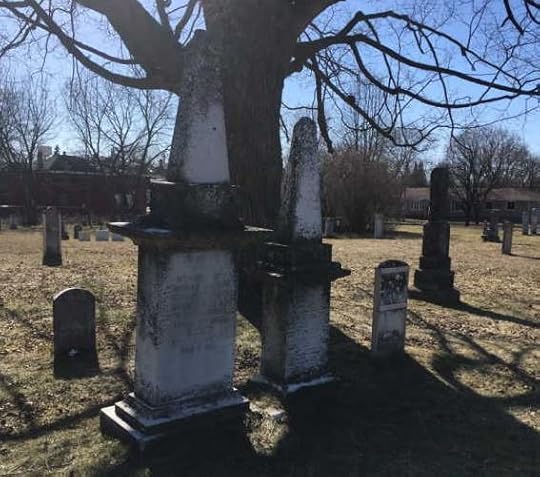
Radenhurst plot, Pioneer Cemetery, Craig Street, Perth, ON
Only four of Edith’s children – George, Anne, William, and Sarah lived into middle age and beyond.
Edith died in 1878, leaving son William, a lawyer, and daughter Annie, to live in the house until 1894. Annie remained single, and moved to Barrie to be closer to her brother, George. William moved his law practice to Toronto.
Archaeologists Discover
Radenhurst Family Dishes
“Thousands of pieces of dishes and kitchenware discovered.”
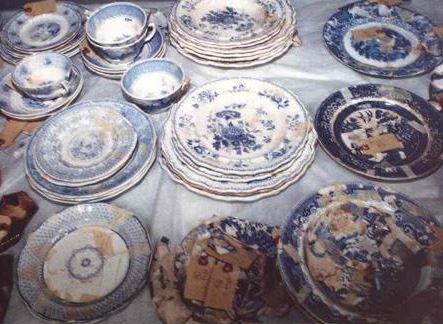
Some of the lovely ornate dishes, glass pieces, and kitchen items were found at Inge-Va
Archaeologists made a remarkable discovery at Inge-Va in 1988. While excavating the site of a small shed which once contained a toilet, they unearthed thousands of pieces of dishes, glasses and kitchenware.
It is believed that Edith Radenhurst had thrown out everything
used to consume meals
because of her children dying of typhoid and tuberculosis.
Last Fatal Duel
Robert Lyon, a close relative of the Radenhurst family was fatally wounded in 1833, in a duel with rival law student John Wilson over the honour of a local teacher. In Perth, it was known infamously as ‘The Last Fatal Duel’. His body lay at the house for the funeral.
In 1894 the estate was sold to the Inderwick family.
INDERWICK family
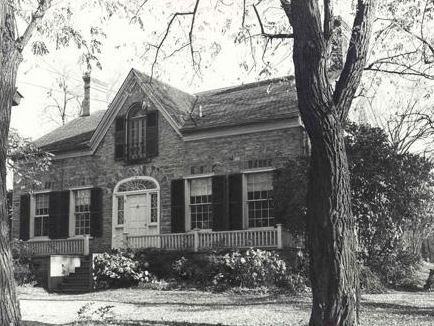
As it appeared in 1923 when the Inderwick family resided there
Ella Leaves Wandering Husband
Brings Children to Perth
1894 – 1989 – Ella Inderwick and her three children: John, Basil, and Cyril, moved into the house in 1894. It was said that she had grown tired of following her wandering husband around the world, in a series of unsuccessful business ventures. Their last stop was her wealthy father-in-law’s tea plantation in Sri Lanka where she often heard the workers in the fields calling out, “Inge-Va”, meaning, ‘Come here’.
“She named the estate Inge-Va
Meaning, “Come Here”
John, the eldest son, moved to England, married Marjorie Handcock, and they had two children – Patrick and Tony. John died in Devon, England at the age of 67. Basil died at the age of 28, fighting with the 17th battalion in WWI, and is buried in England.
Cyril Inderwick, the youngest of the three sons, remained in Perth, joined the Royal Navy, and served in WWI. He lived in the West Indies, and on the west coast of Africa. After WWII, he returned to Perth and married Winnifred ‘Winnie’ Shaw, in 1946, at St. James Anglican church. Winnie was the daughter of Alexander Shaw and Elizabeth Denny. They did not have any children. Cyril became President of the Perth Museum, and was keen on preserving history and specifically heritage buildings. He died at age 67, in 1962.
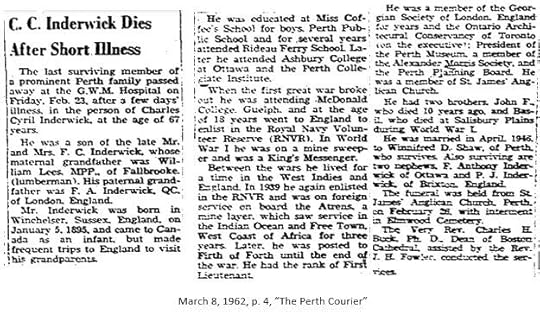
Inge-Va Donated to
Ontario Heritage Trust
Cyril’s wife, Winnifred ‘Winnie’ Shaw Inderwick, local historian and philanthropist, donated the property to the Ontario Heritage Trust in 1974. Through a life-tenancy agreement she remained in the house until her death in 1989.
Ontario Heritage Trust
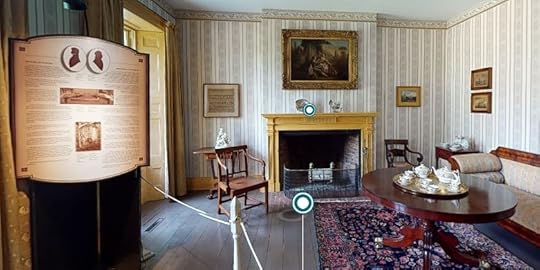
From the Ontario Heritage Trust site – an interactive map of Inge-Va’s rooms
Click on link to take a virtual walking tour through Inge-Va:
https://www.heritagetrust.on.ca/en/properties/inge-va
What Became of Inge-Va?
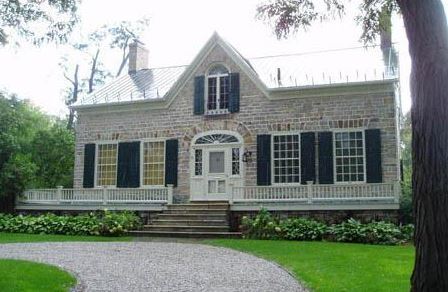
Inge-Va, 66 Craig St., Perth, ON, in 2006
In recent years, the estate appeared to be abandoned, and the grounds overgrown.
In a committee meeting in October 2020, the Perth town council discussed a letter received from a concerned citizen – Lynda Haddon. Haddon stated that Inge-Va was in a dilapidated state.
Together with 16 Perth and district gardening and landscaping volunteers, Haddon maintained and beautified the grounds of Inge-Va in the years between 2004 and 2010. She was also an active member on the house’s Board from 2006 to 2010. The Board attempted to ensure that that there was usually a tenant on site, like the Perth and District Chamber of Commerce, and that the grounds were tidy and buildings were maintained. The Ontario Heritage Trust resumed responsibility for Inge-Va in 2010. Haddon believed that property has gone downhill since then, pointing out that there was no access to the house or the gardens.
Council agreed that Inge-Va appeared to be neglected, and stated that Ontario Heritage Trust is responsible for the property. Council promised to contact Ontario Heritage Trust and said they would investigate further, once they had received a response from Ontario Heritage Trust.
(from the Ottawa Valley News, published Oct. 8, 2020)
In March of 2021, the Perth town council’s voted to sign a one-year agreement with the house’s owner, the Ontario Heritage Trust (OHT), to have volunteers assist in garden restoration at the Craig Street location. The Ontario Heritage Trust promised to provide $2,000 toward the upkeep.
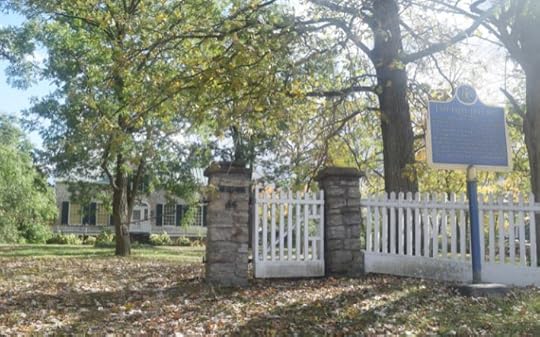
photo: “Inside Ottawa Valley”, “Perth Courier”, Desmond Devoy
Archaeological Treasures
“Inge-Va’s archaeological value is one of its most important characteristics. Excavations carried out from 1987-1994 recovered approximately 50,000 artifacts, 15,000 of which came out of an abandoned privy. This pit contained over 350 china objects and 280 glass objects. Items recovered from the privy include 10 different sets of tableware, 280 bottles, 71 wine glasses, 108 pharmaceutical and toiletry bottles, 16 chamber pots and seven toiletry sets. These items were discarded in an attempt to rid the house of tuberculosis. These objects provide a unique insight into how medical threats were addressed in the latter part of the 19th Century.”
Source: Ontario Heritage Trust Easement Files
(most of these items are being held in Toronto, ON)
Last Fatal Duel
Controversy
Perth Historical Society member, Ron Shaw, has suggested that Inge-Va may not actually be the site of the last fatal duel in the province, as engraved on the plaque, although the body of Robert Lyon is believed to have been carried to Inge-Va for the funeral.
Shaw writes,“an eyewitnesses testified at the Wilson trial, Robert Lyon died where he fell in that North Elmsley Township field,” though Lyon’s body was indeed carried to Inge-Va House, then home of Thomas Mabon Radenhurst (1803-1854), “under whose tutelage Lyon was studying law.”
“(the duel) was fought on the west bank of the Tay River, about 100 yards south of South Street, at a point midway across the width of North Elmsley Township … then the farm of John Ambrose Hume Powell.”
The plaque outside of Inge-Va House on 66 Craig St. states: “Here died the victim of the last fatal duel fought in this province.”
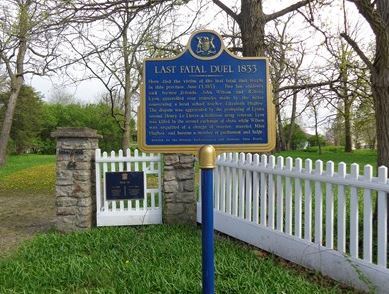
The location of the plaque on the grounds at Inge-Va
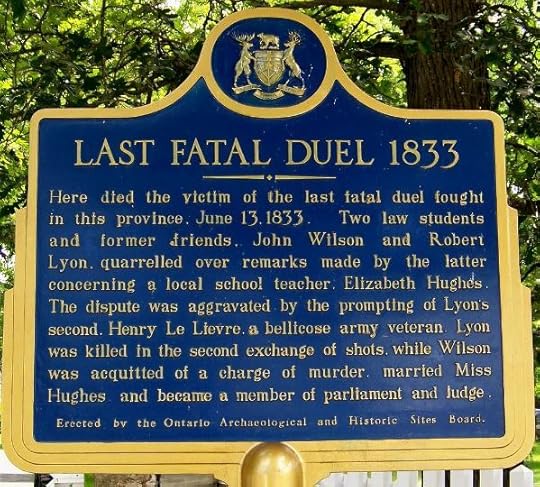
Last Fatal Duel placque at Inge-Va
Source of Last Fatal Duel controversy – ‘The Record News’, Sept. 10, 2021
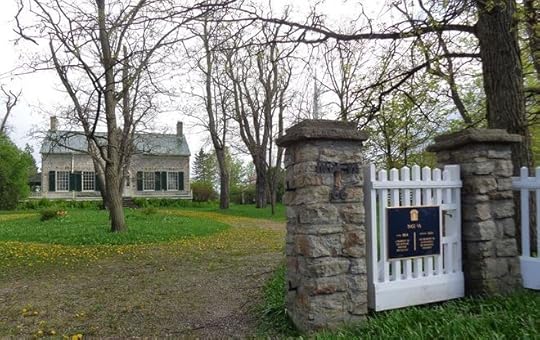
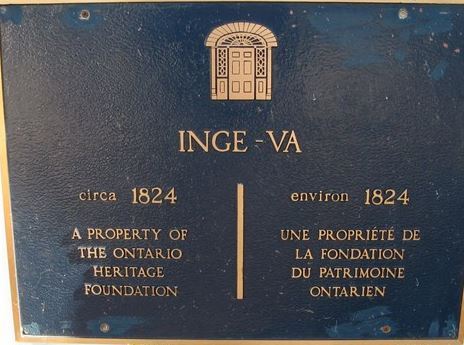
Future of Inge-Va
We can only hope that Inge-Va continues to be valued and treasured by her custodians, and that both the stately house along with the historic grounds are maintained and preserved for future generations.
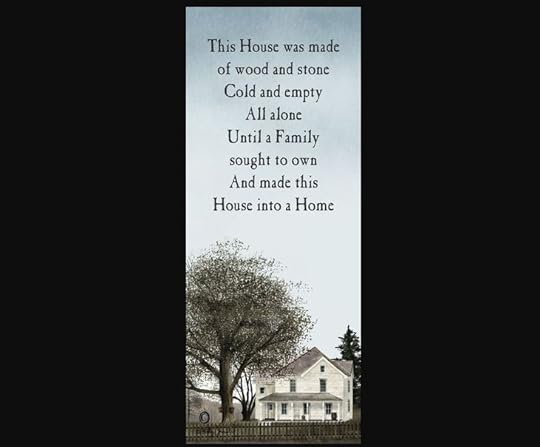
***
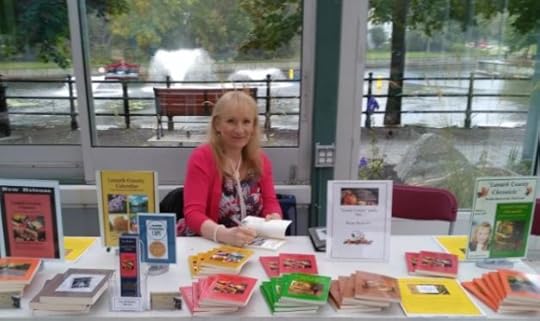
Arlene Stafford-Wilson
Member, Association of Professional Genealogists
Member, Lanark County Genealogical Society
Author of : “Lanark County Christmas”, “Lanark County Comfort”, “Lanark County Collection”, “Lanark County Calling”, “Lanark County Classics”, “Lanark County Connections”, “Lanark County Calendar”, “Lanark County Chronicle”, “Lanark County Kid”, & “Recipes & Recollections”
May 18, 2023
Clyde Hall – Caldwell Mansion
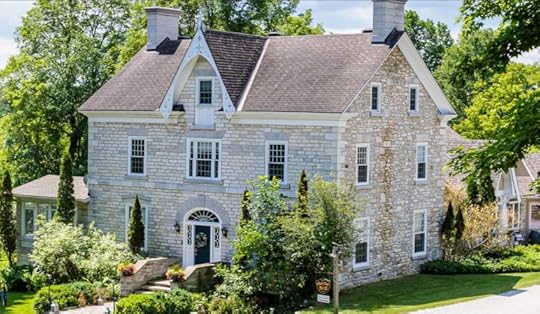
Clyde Hall
Caldwell Mansion
Caldwell Family
“They accepted the wilderness at its worst, defied it, and won.
It was a triumph of the human spirit over disaster.”
“The Caldwells of Lochwinnoch, Renfrewshire, Scotland, can be traced in direct lineage to an Alexander Caldwell, born 1636, died 1706. From this ancestor three successive generations of Alexander Caldwells carried on the family name until the auld Kirk burying ground gave them perpetuity in slabs of stone. Then came the first break when William Caldwell, son of the fourth Alexander, left the glens and braes, exchanging an Arcady for a wilderness.
William Caldwell was prospering in the Paisley shawl trade when the economic disaster, following the Napoleonic wars, blasted the weaving industry into financial ruin and drove its dependents into poverty. Then for many a family came the most difficult decision of a lifetime – to emigrate and transplant the roots of generations or to remain and suffer with kinsfolk. To their everlasting honor they did not shrink from meeting the only alternative, and this country gained thereby an infusion of that rugged independence of character which is the glory of the Scot, William Caldwell and his family were among those who accepted this challenge of destiny.
They came on the Earl of Buckinghamshire, William Caldwell, and his highland wife, Margaret McCallum, and their children, Margaret, Mary, Alexander and Boyd, who with 600 others faced a seven-weeks’ voyage under distressing conditions before setting foot on land. The limits of space preclude giving many names from the passenger list of emigrants on the Buckinghamshire, and other sailing ships, “George Canning”, “Commerce”, and “David of London”. Many of their descendants still live on the homesteads they hewed in the pioneer townships of Lanark.
Caldwell, and another emigrant, James McIlraith were members of the Paisley Townhend Emigration Society, and having drawn their location tickets from Colonel William Marshall, Superintendent of settlement at the Lanark depot, they selected their lots on either side of the Third Concession Line of Lanark Township, about seven miles northwest of the present village. They must have had an eye for something reminiscent of the glens of home for here a brawling burn known as the Little Clyde, cascades down a charming vista. Most appropriately, they called in ‘The Clachan” (small village), and it remained the motivating spirit of the Caldwell-McIlraith Settlement. Here, far from the noisy gnat-swarm of cities, they wrought out their separate destinies. They accepted the wilderness at its worst, defied it, and won. It was a triumph of the human spirit over disaster.
The Caldwells and all that gallant company started from scratch. Supplies and material were expensive and hard to procure. In summer they had to be ‘man-packed’ over the forest trails from distant centers. Their first log dwellings were chinked with moss, and their clothes were homespun. But there was an abundance of game and fish and wild fruit. They learned the first crude methods of making maple syrup and sugar, and brewed tea of herbs.”
(excerpt from an article by Harry J. Walker in “The Ottawa Journal”, March 23, 1937, p.6)
Caldwell Family
William Caldwell (1774-1863) and Margaret McCallum Caldwell (1788-1879) had ten children, six girls, and four boys: Margaret (1812-1877), Alexander (1815-1872), Mary Ann (1818-1872), Mary (1816-1852), Boyd (1818-1868), Euphemia (1821-1874), William (1822-1862), John (1825-1897), Ann (1830-?) and Agnes (1833-1907).
Clyde Hall
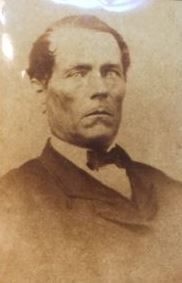
Alexander ‘Sandy’ Caldwell in 1869
Clyde Hall, the Caldwell mansion, was built in 1846 by the wealth generated from a successful lumber trade established by Alexander ‘Sandy’ Caldwell and his wife, Mary Ann Maxwell Caldwell.
Mary Ann died suddenly of a heart attack at age 54, in 1872, and her husband, ‘Sandy’ passed away three months later at age 57. (It’s been said that he never recovered from her death, and that he died from a broken heart)
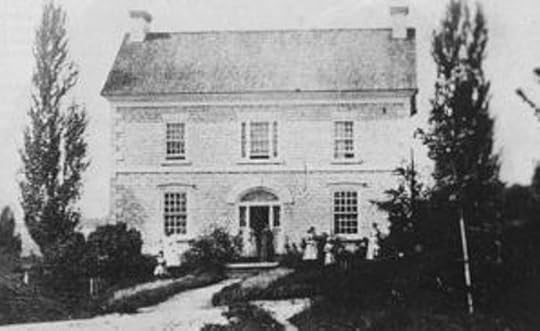
Clyde Hall in its early days
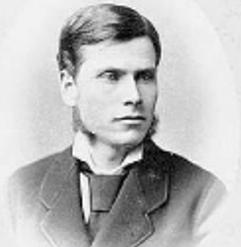
William Clyde Caldwell, son of Alexander Caldwell and Mary Maxwell Caldwell

Miss Caldwell, June 1881, taken in Ottawa, by Wm. Topley (Library & Archives Canada)
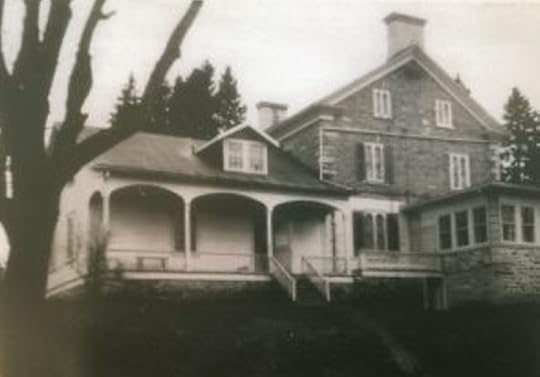
Clyde Hall with the addition of a summer kitchen c. 1889
“Mr. W.T. Traynor, chairman of the reception committee, was waiting with a beautiful sleigh drawn by four beautiful white horses, driven by Mr. James McArthur, and gaily decorated in honor of the occasion.”

“The watch was presented by Mr. W.T. Traynor, and was a beautiful specimen of the watchmaker’s art, being solid gold, 14 carat, 21 jeweled, hunting case, bearing on the outside the monogram, A.C.C., while on the inside was engraved, “Presented to Lieut. A.Clyde Caldwell, R.C.R. by his fellow citizens, on his safe return from active military service in South Africa, Lanark, Dec. 1900.”
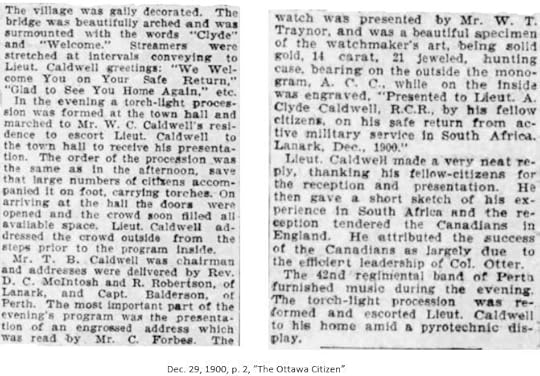
Clyde Hall estate was passed down to Thomas Boyd ‘T.B.’ Caldwell, the son of Boyd Caldwell, when he was left as “sole representative and proprietor of the Boyd Caldwell interests”, including the Caldwell Woolen Mill, lumber enterprises, mining rights, and a store in Lanark.
Thomas Boyd Caldwell, known as “T.B.” Caldwell, was a Member of Parliament for North Lanark, under Wilfred Laurier,
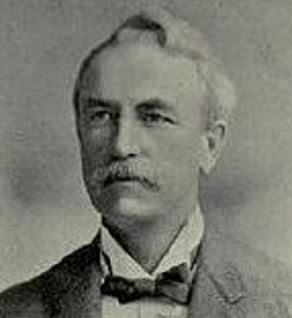
Thomas Boyd ‘T.B.’ Caldwell, M.P. for Lanark North, (1856-1932), was the last of the Caldwell family to own Clyde Hall
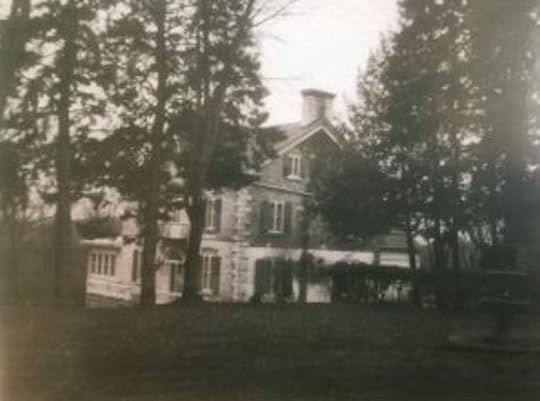
Clyde Hall c. 1900

April 9, 1908, p. 10, “The Ottawa Journal”
Clyde Hall – Legacy of the Caldwell Family
“In Lanark village, the old Alexander Caldwell house, known as ‘Clyde Hall’, remained in the family for nearly a century.”
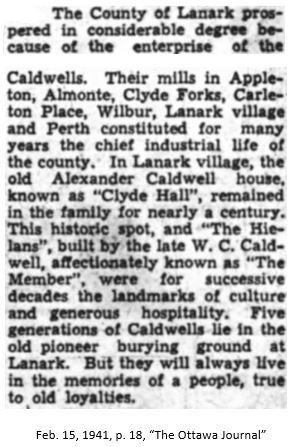
Clyde Hall remained in the Caldwell family until the summer of 1932, following T.B. Caldwell’s death, when it was sold to Mr. M.J. Cullen.
Cullen family
M.J. Cullen was the Chief Immigration Inspector of the Dominion, for three terms, and private secretary to the Hon. Wesley Gordon, Minister of Immigration.
Michael Joseph Cullen (1884-1951) married Mary Louise ‘Minnie’ Nagle, (1877-1952) in Carleton Place, in 1907. Their children: John Arthur Cullen (1911-1992), Muriel Cullen Macdonald (1913-1992), Kathleen Cullen Macdonald (1915-1991), Dorothy Cullen Burnett (1916-2005), Frances Cullen (1916-1919), Helen Cullen McCormick (1920-1975), and Mary Cullen Meagher (1929-2011)
When the Cullen family bought Clyde Hall, Michael was 48, his wife, Minnie, was 45. Their children: John was 21, Muriel was 19, Kathleen was 17, Dorothy was 16, Helen was 12, and Mary was 3.
“Mr. M.J. Cullen has recently bought from the T.B. Caldwell estate, the fine old residence known as ‘Clyde Hall’, in Lanark Village.”
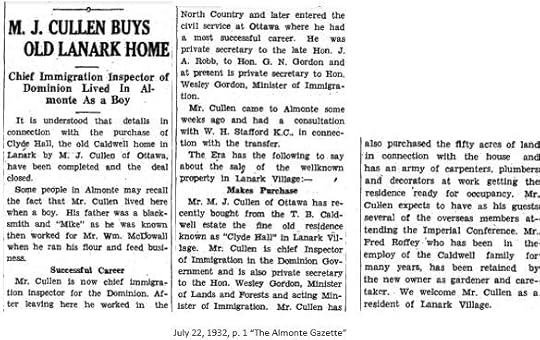
The Cullen family enjoyed Clyde Hall as their summer home, and many upgrades were completed while they owned the property. They retained one of the Caldwell employees, Mr. Fred Roffey, as their gardener and caretaker.
The Cullen family remained at Clyde Hall for six years, then in 1938, they sold the property to Ottawa businessman, Herbert Plant and his family.
Clyde Hall Sold
to Herbert Plant
“Mr Plant, a brother of a former Mayor of Ottawa, and prominent businessman, intends further to improve the property.”
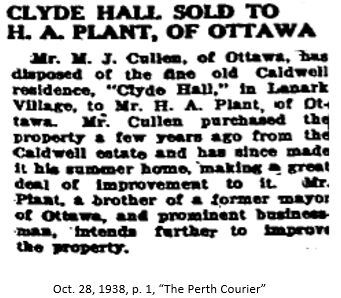
Plant family
In the fall of 1938, M.J. Cullen sold the property to Herbert A. Plant, (1893-1972) an Ottawa businessman. Plant was the co-founder of Plant and Anderson Limited, and in later years he was a Director of the Ottawa Rough Riders. His brother, Frank H. Plant, served as Mayor of Ottawa from 1921-1923, and again in 1930.
Clyde Hall was a summer home for Herbert Alfred Plant (1893-1972) and his wife, Gladys Lilian Robertson Plant (1895-1986), and their two children, Isabel Plant, (1922-2006), and James Plant, (1925-2018)
Gladys Plant was a member of the Imperial Order of the Daughters of the Empire (I.O.D.E.), and frequently entertained members of her club at Clyde Hall, during the summer months, when they were in residence there.
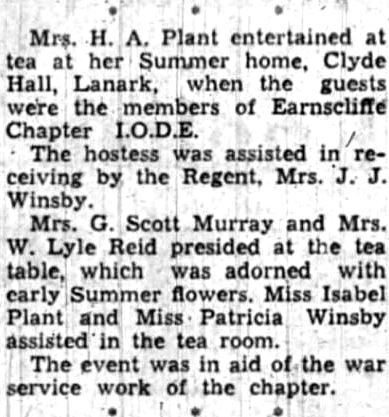
June 27, 1940, p. 10 “The Ottawa Journal”
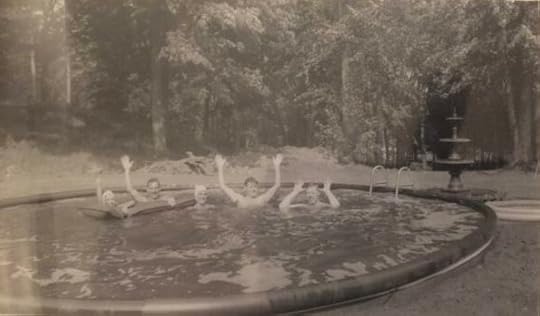
The Plant family enjoying the pool at their home, Clyde Hall, Lanark, ON
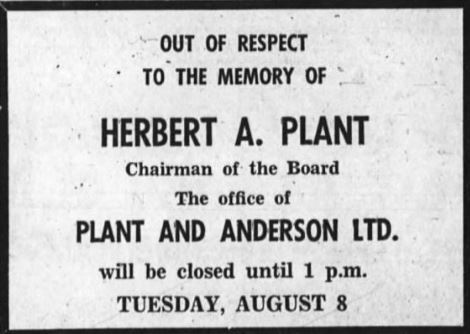
Clyde Hall For Sale
$29,500
In the fall of 1957, Clyde Hall was put on the market:
“14 spacious rooms, and 58 acres. One of the finest estates in the valley.”
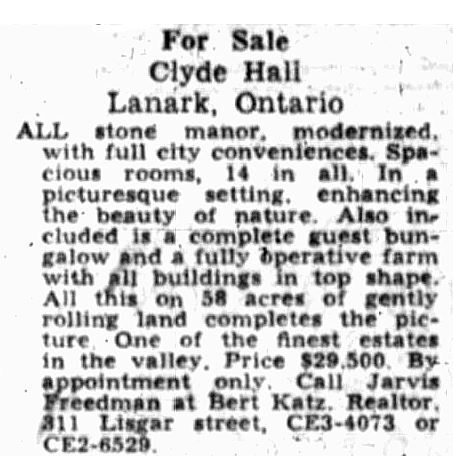
Sept. 28, 1957, p. 23, “The Ottawa Journal”
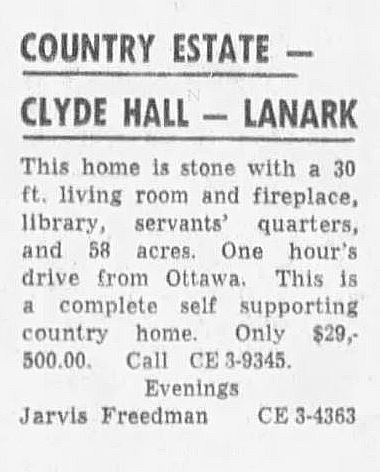
May 15, 1958, p. 26, “The Ottawa Citizen”
McMullen family
Pearl Lusk McMullen, daughter of Howard Lusk and Jessie Grant, purchased Clyde Hall in 1958, along with her son, Thomas ‘Bob’ McMullen and his wife, Jean Victoria Wilmott McMullen, and established the Clyde Hall Nursing Home.
Pearl’s grandchildren, Sharron ‘Sherri’ McMullen (Lillico), James McMullen, Gloria McDonald, Betty Ann McMullen Stanton, Robert McMullen, and Thomas McMullen spent their summers at Clyde Hall.
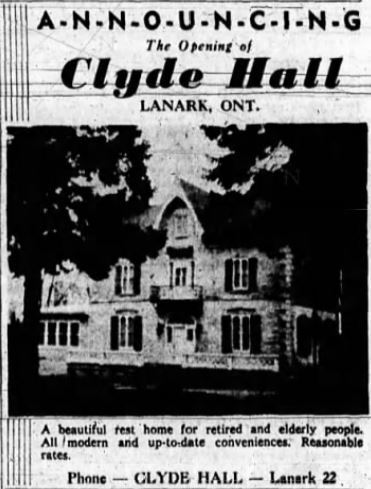
July 19, 1958, p. 7, “The Ottawa Journal”
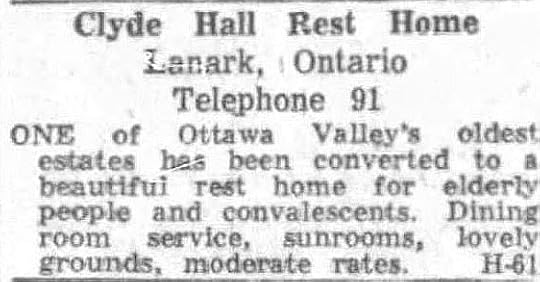
September 3, 1958, p. 35, “The Ottawa Citizen”
On March 19, 1963, Pearl McMullen, owner of the Clyde Hall Nursing Home, passed away suddenly, at age 62.
By the fall of 1963, Clyde Hall was under new management.
In 1963 – Clyde Hall Nursing Home
Under New Management
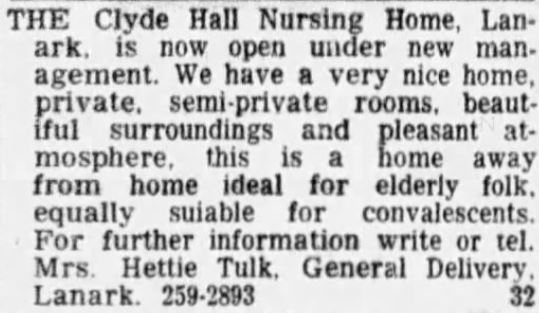
Nov. 7, 1963, p. 43, “The Ottawa Citizen”

May 23, 1964, p. 37, “The Ottawa Journal”
By the early 1970s, the structure was abandoned by the owner of the property, who lived in Toronto. The building became rundown, and vandalism and looting were rampant.
1970s – Youth Programs
& Project Echo
In the summer of 1972, a program called Opportunities for Youth was established in Lanark County. One of the projects initiated was called ‘Project Echo’, and they received a grant of $12,200, to provide a center for local youth. The owner of Clyde Hall (unknown) a resident of Toronto, kindly allowed the members of the project to use it, rent free for their drop-in center.
“They received a grant of $12,200 to provide a center for local youth.”

July 6, 1972, p. 2, “The Perth Courier”
The program ran from July – September in 1972. In the afternoons and arts and crafts program included bead-work, fabric printing, ceramics with clay, batik, and candle-making. Evening programs featured games, music and entertainment. On September 3, 1972, the program’s final event, a music festival, was held at Clyde Hall, Toronto music group, ‘Crab Shaw’, were the evening’s special guests. Local musicians were invited to play. The festival attracted between 100-200 youth.
“By the late 1970s, there were safety concerns brought to the attention of the Lanark Township Council concerning an open well on the abandoned property.”
The property remained empty, abandoned, and overgrown during the 1970s, 1980s, and 1990s.
Mysterious Fire of 1999
The fire of 1999 destroyed the interior, and left only a shell of the former glory of the once stately building. It is believed to have been caused by arson.
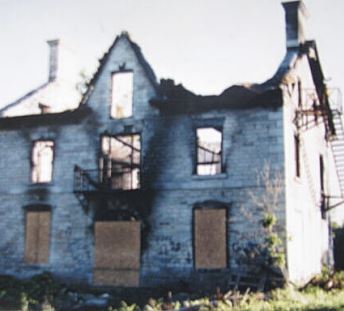
Very little remained of the beautiful historic home of the Lanark Caldwell family.
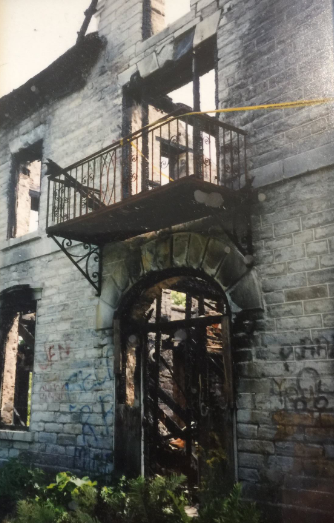
Lillico family

In an article in by Iris Winston, in “The Ottawa Citizen”, Oct. 4, 2003, p. 81:
“As a teenager, Mrs. Lillico had spent her summers helping at the retirement home that her grandmother, Pearl McMullen, operated out of Clyde Hall. The house, together with the 300 acres around it, was eventually purchased by Ms. McMullen in 1958. After her sudden death five years later, ownership reverted to the Toronto businessman who held the mortgage on the property.
Mrs. Lillico made several unsuccessful attempts to buy the house from him. Disheartened, she recognized that she must let her dream go.
In 1999, Mrs. Lillico discovered that her grandmother’s property had been purchased by a local developer, who intended to use most of the land for a golf course. He was also ready to sever the house and 10 acres around it from the golf course development. The news rekindled Mrs. Lillico’s dream to own the property.
Although the interior had been gutted (by the fire of 1999), and the roof had caved in, the two-foot-thick stone walls remained intact. So did Mrs. Lillico’s passion for the house. By January 2001, it was the Lillicos’ new home.
Rebuilding and recreating Clyde Hall in the image of the original with the added conveniences of modern plumbing and kitchen facilities was an 18-month undertaking.
Mr. Lillico recalled, “..We made sure that reconstruction was identical to the way it was in 1870. The beams are the same size, hooked into the stone in the same way. The timbers are extra heavy and extra-large. We had to use a manual lift to put them in place in each floor.”
Eaves and decorative overhangs were customized to replicate the originals. The banister and a few of the wooden spindles below it had survived the fire. Replicas were made to complete the reconstruction of the staircase.
It took some time to find a tradesman willing to tackle the complex job, until Michael Miller, an enterprising fellow from Carleton Place accepted the challenge.
The whole project, from purchase through renovations has cost the couple about $700,000.”
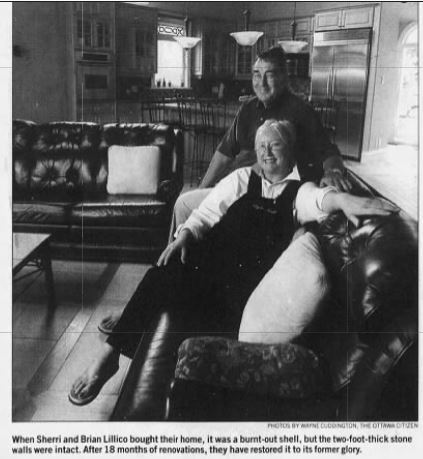
photos by Wayne Cuddington, “The Ottawa Citizen”, Oct. 4, 2003, p. 81
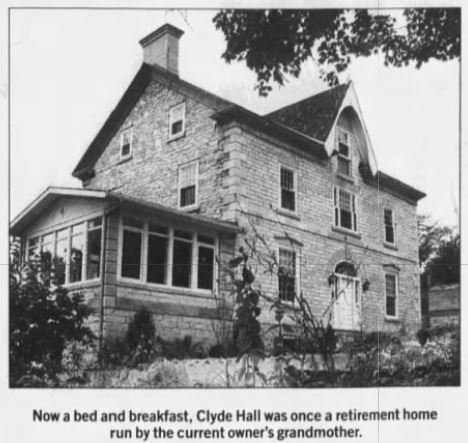
Oct. 4, 2003, p. 81 “The Ottawa Citizen”
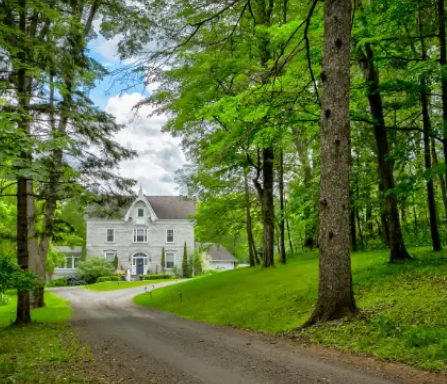
New Gates added 2011
In 2011, local Blacksmith, Tony Walsh, created new gates for Clyde Hall.
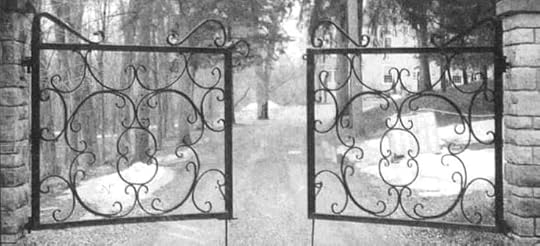
April 9, 2011, p. 39, “The Ottawa Citizen”
Salzmann Family
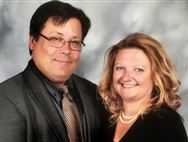
photo: from the Clyde Hall website – http://www.clydehall.com
In 2017 Liisa and Robert Salzmann moved from Toronto and purchased Clyde Hall. Liisa is a gourmet chef, and Robert is a certified Master Pastry Chef. He also works part time as a Professor at Algonquin College, teaching baking and pastry arts.
Clyde Hall offers High Tea, Rehearsal Party Dinners, Gift-Opening Brunches, and Wedding Cakes. They also offer courses on the art of running a bed and breakfast business.
Photos of Clyde Hall Bed and Breakfast:
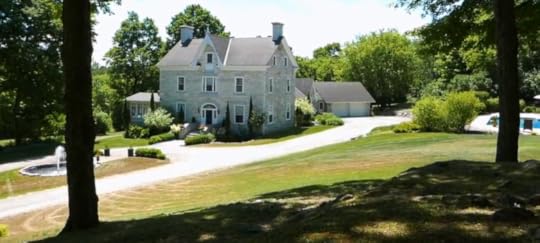
The driveway and scenic grounds of Clyde Hall as it appears today
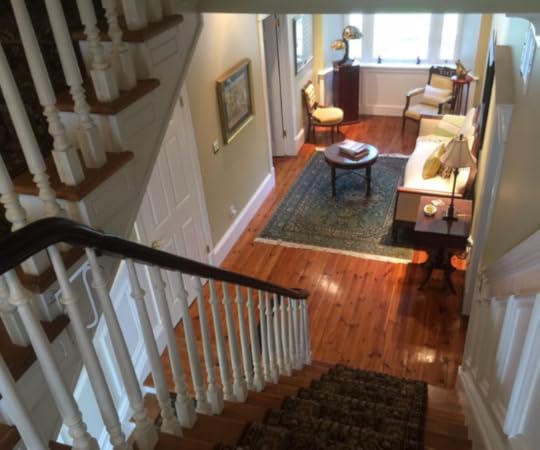
Entrance hall and staircase at Clyde Hall
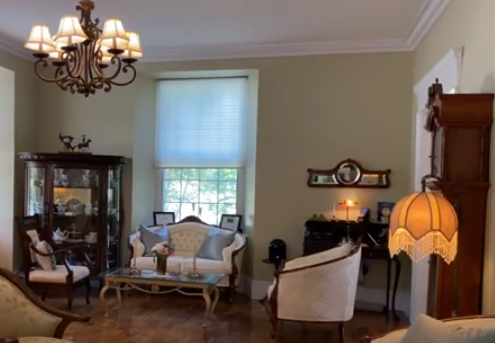
One of the elegant rooms at Clyde Hall

Clyde Hall parlor

Decorated to preserve the historical features
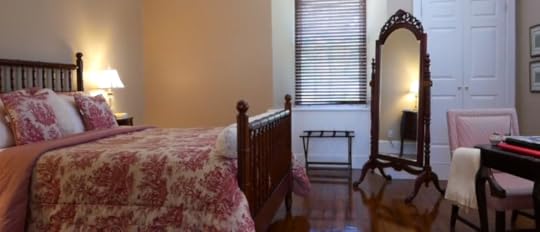
One of the bedrooms at Clyde Hall

Elegant dining at Clyde Hall (photo from the Clyde Hall website)
Clyde Hall
Past, Present, and Future
…And so, we’ve witnessed the evolution of Clyde Hall, from its proud beginnings as the mansion of the wealthy Caldwell family, those hopeful sons and daughters of Scotland who came to the New World, worked hard, and found success. The Caldwell offspring continued their legacy, provided employment for many, served their communities in politics, and for them Clyde Hall became a proud symbol of their success.
The families that followed added their own special spirits to this historic home – Michael Cullen, the Chief Inspector of Immigration for the Dominion, his wife, Minnie, and their large busy brood of children, laughing and playing on the grounds. The Cullen family hosted the overseas members attending the Imperial Conference within the walls of Clyde Hall.
Next, there was Herbert A. Plant, founder of Plant and Anderson Limited, Director of the Ottawa Rough Riders whose brother had risen to the ranks of Mayor of Ottawa, and Herbert’s wife, Gladys Plant, an elegant hostess, and their two children, Isabel and James.
Pearl Lusk McMullen came next to Clyde Hall, with her vision for a beautiful home for the aged, set among the tall trees and spacious lawns – the perfect setting for her guests to heal their bodies and their spirits. The McMullen grandchildren never forgot their idyllic summers spent at the mansion – Sherri, James, Gloria, Betty Ann, Robert, and Thomas.
Although Clyde Hall had a brief moment during the 1970s when it served the youth of the community, it may remain a mystery as to why the owner in Toronto left the property abandoned for so many years, or if the fire in 1999 was truly accidental.
Brian and Sherri Lillico, Clyde Hall’s next owners, took the burned stone shell, and pile of ashes, and through hard work and determination brought the mansion back to her former glory and beyond. Like her grandmother, Pearl, Sherri thought the magnificent home should be shared with others, and she and her husband established a bed and breakfast.
Clyde Hall’s current owners, Liisa and Robert Salzmann continue the tradition of inviting guests to their elegant country estate for rest, relaxation, fine dining, and special events. Robert, a Master Pastry Chef, and Liisa, a gourmet chef, bring the element of finely-crafted food to their inviting bed and breakfast.
As Clyde Hall evolves over the years we can only imagine what her future may hold. The estate is one of the crown jewels in Lanark’s past and present, and a monument to the proud history of the community. From a stately home for the Scottish lumber barons, to an elegant bed and breakfast fit for a king, Clyde Hall’s history, mystery, and mystique, lives on.
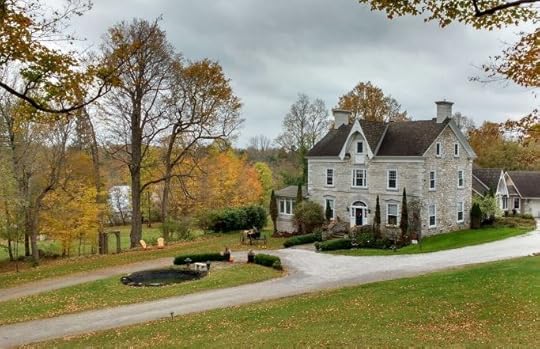
Clyde Hall is located at 131 Mill St. in beautiful Lanark, Ontario
For more information: https://www.clydehall.ca/
For more local history and stories set in Lanark County: http://www.staffordwilson.com
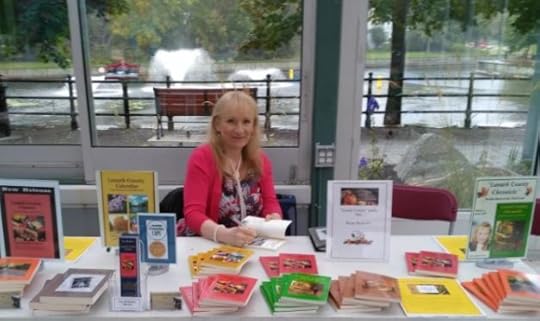
Arlene Stafford-Wilson
Member, Association of Professional Genealogists
Honorary Life Member, Lanark County Genealogical Society
Author of : “Lanark County Christmas”, “Lanark County Comfort”, “Lanark County Collection”, “Lanark County Calling”, “Lanark County Classics”, “Lanark County Connections”, “Lanark County Calendar”, “Lanark County Chronicle”, “Lanark County Kid”, & “Recipes & Recollections”
May 13, 2023
Soper Theatre, Smiths Falls
It was 1914 when local man, Bert Soper, opened the Rideau Theatre on Chambers Street, at the corner of Beckwith, in Smiths Falls. Stanley McNeill was the first manager. He was a local lad, son of Harry McNeill and Alice Butler, and he ran the theatre like a well-oiled machine.
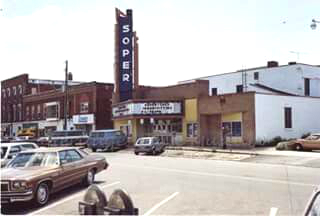
In the 1930s, the theater was renamed ‘The Capitol’, and people drove for miles around to come and see ‘Gone With the Wind’, ‘King Kong’, and “The Wizard of Oz”.

A new theater was built in 1949, at 15 Main Street in Smiths Falls. The new Soper Theatre boasted 964 seats, making it the largest movie theater in Eastern Ontario.
The Soper was managed by Walter Lackenbauer, a man who took his job very seriously. It was said that Walter was so punctual that you could set your watch when you saw him walking across the bridge, on his way to work each day.
When Walter Lackenbauer retired in 1976, Art White became the Manager of the Soper, and worked in that capacity until 1992, and then Jan Stepniak took over the position.

Another familiar face at the Soper Theatre was Violet Gariepy, a native of Scotland, she worked at the candy counter along with Norma Willoughby, and Jessie Loucks.
This is the clock that hung on the wall in the concession counter at the Soper. *

Some of the early films shown at the Soper, were ‘tame’ compared to the movies produced today. Films like ‘Snow White’, and ‘Old Yellar’ were suitable for the whole family.
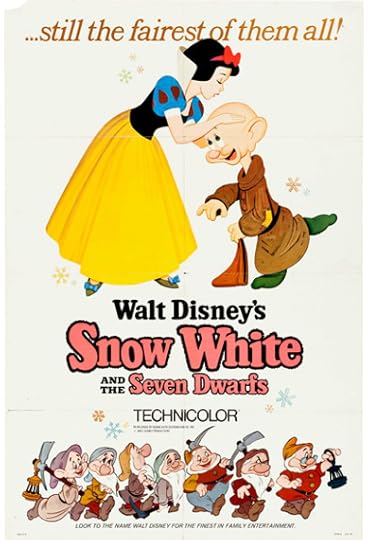
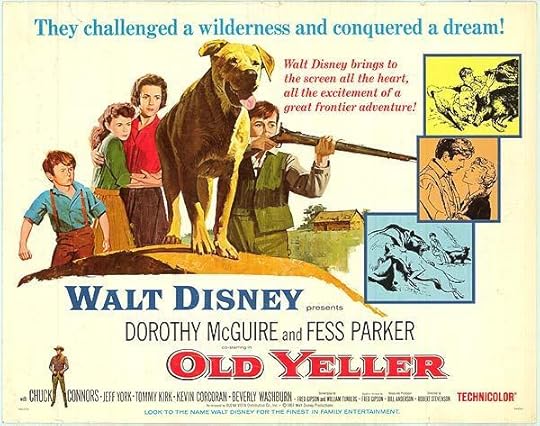
One of the most popular movies in the 1950s was “The One That Got Away”, – the story of a German prisoner of war, Franz von Werra, who escaped from a moving train, as it passed through the town of Smiths Falls.

By the time I was old enough to attend a movie, the Soper Theatre was the only place in the area where we could go to see the newest Hollywood films. The Soper was just around the corner from the Sweet Shop – talk about a great location!
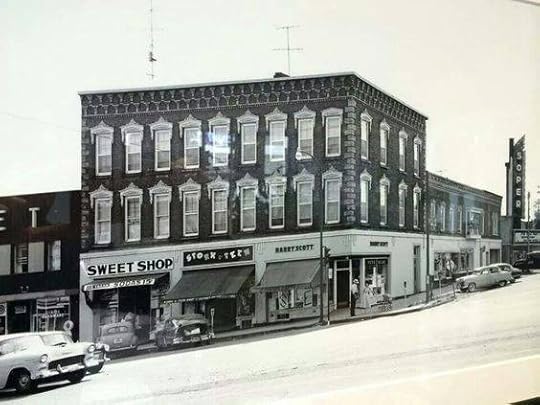
The Ushers who worked at the Soper Theatre might have been the original ‘multi-taskers’, who had a variety of jobs. These were the ‘boys’ who helped young children to their seats at the Saturday matinees, who shone their flashlights on young lovers in the back row, and did their best to keep the smoking and drinking from getting out of hand.

The same ushers had to walk back to the green seats, and remind smokers that their policy was cigarettes only, no cigars. They also had to police the drinkers, the kids who liked to sneak in mickey bottles in their jackets and have a few drinks on a Friday night.

The mickey, invented in Perth, by John McLaren, was just the right size to sneak into the movies!
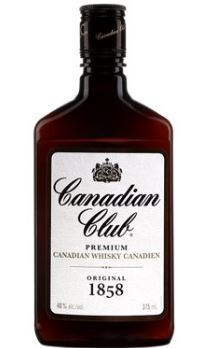
Some of the ushers who worked at The Soper, over the years: Gordon Evoy, Scott Irvine, Ralph Scott, Grant Dopson, Rob Knapp, Donnie Lackey, Ricky Laming, Tommy Martin, Bert Stranberg, Joe Gallipeau, John Marks, Brian McDougall, and Hugh Finlayson.
The big blockbuster movies in those days were some that we’ll never forget. According to many of the former staff members at the Soper, these movies were among the ones that brought in the biggest crowds in Smiths Falls:
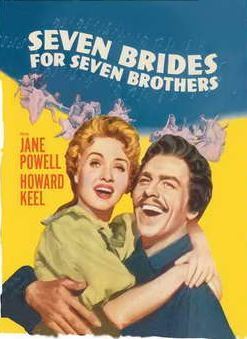
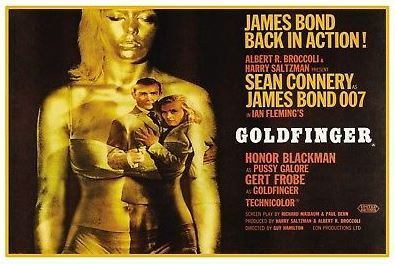
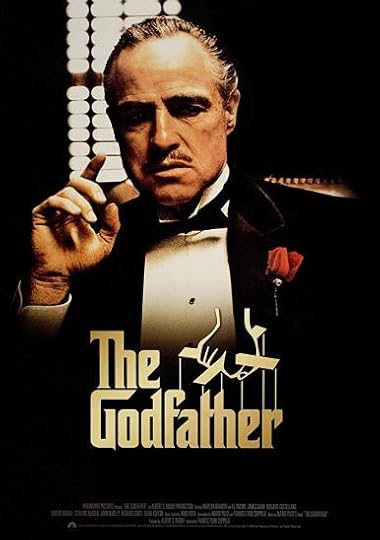
No one wanted to swim the year that this one came out –
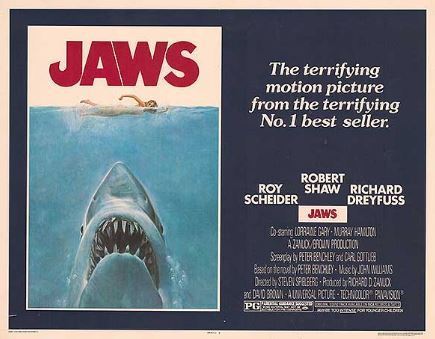
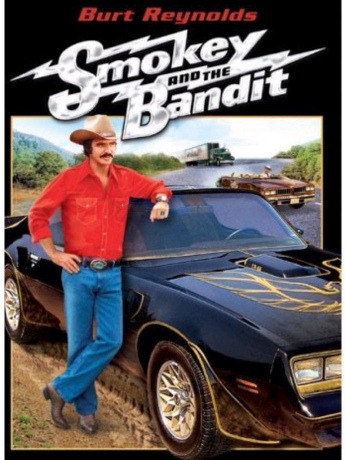
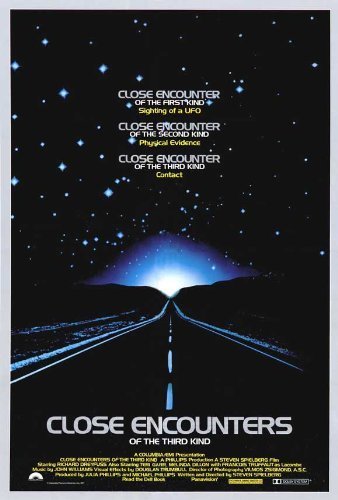


On the opening day of Jurassic Park, staff members, like Tammy DeSalvo, dressed up as dinosaurs, much to the delight of local children!


Sometimes we forget that it’s the people we don’t see at the theater, the ones who work behind the scenes, who play some of the most important roles. Rae Murphy was Projectionist at the Soper Theatre when the building was brand new, in 1949. The back-up Projectionist was Widge Williams, son of Bill Williams, owner of the Port Elmsley Drive-In Theatre.
Everyone’s favourite place at the Soper Theatre was the candy counter, and along with Violet Gariepy, you could find Gail Preece, along with brother and sister team – Christine and Stephen Harper, and twins David Morris and Stephanie Morris. David later became a police officer for the Town of Smiths Falls.
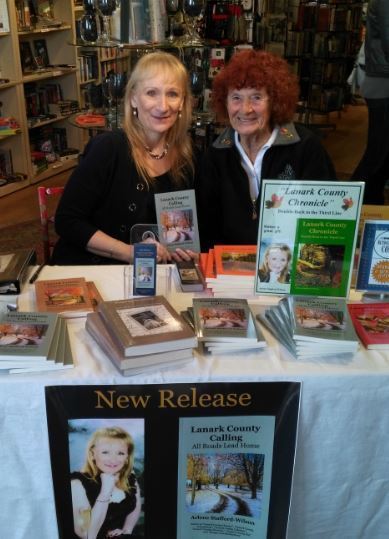

Many of us will never forget our very first movie, and for those of us who grew up in the area, the Soper Theatre was our first experience in a real movie theater.
The very first staff-member we encountered might have been Phyllis Evoy, at the ticket booth, or Violet Gariepy at the candy counter.

We may have noticed a very serious-looking man, Walter Lackenbauer, the Manager, walking around the lobby, making sure that everything was running smoothly. Maybe we’d catch a glimpse of Rea Murphy, on his way to the projection booth, or one of the helpful Ushers escorting a child, or an elderly person, safely to their seat.
Although most of us have been to more modern, slick, new theaters since our nights at the Soper Theatre, those special, magical nights of our youth will remain forever in our hearts.
*note – the photo of the red Coca-Cola clock that hung on the wall of the candy counter was provided by Violet Gariepy. Violet’s husband Raymond became ill, and Jan Stepniak visited Ray in the hospital. Ray told Jan how much he had always loved the clock from the candy counter. Jan came to their home later, and presented Ray with the clock. Ray sinced passed away, and the clock hangs proudly on Violet’s wall, a treasured memory of her time working at this much loved theater.Photos of the Soper Theatre: Steven Maddock of Hyfund StudioFor more information on John McLaren of Perth, inventor of the ‘mickey’John McLaren of Perth, inventor of the mickey…………………………..
Discover the fascinating people in Smiths Falls who made the magic happen at the Soper Theatre. Learn about the lively staff Christmas parties, find out who went to the Rideau Hotel every night after work and why, and which one of the staff was married to a well-known hockey player. Read about the daily operations, behind-the-scenes at the Soper. Learn about a controversial court case when a Perth lawyer brings charges against a local film distributor. Meet the people who ran this beloved theater – the managers, the projectionists, the ushers, the candy-counter workers, and the people at the ticket booth, and read their memories and stories of this very special place! Go behind the scenes at this beloved theater in – “A Night at the Movies: The Soper Theatre in Smiths Falls”, in ‘Lanark County Calling – All Roads Lead Home’.
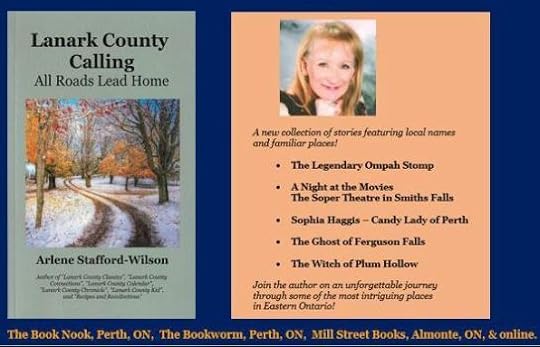
Available at The Book Nook in Perth: https://thebooknookperth.com/product/lanark-county-calling-arlene-stafford-wilson/
Spark Books and Curios, in Perth: https://sparkperth.ca/
Mill Street Books, Almonte, Ontario: https://millstreetbooks.com/
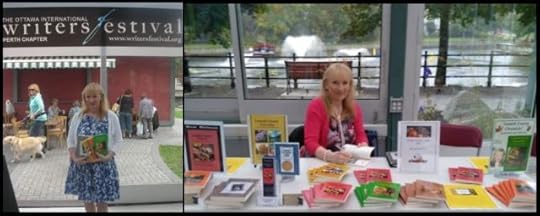
Arlene Stafford-Wilson
Member, Association of Professional Genealogists
Honorary Life Member, Lanark County Genealogical Society
May 11, 2023
Scotch Line Cheese Factory
Opened in 1879
The Scotch Line Cheese Factory opened in 1879, and was established as a co-operative business, with many local farmers contributing their milk. Cheese, cheese curds, and butter were produced there, and the quality of their products had a reputation for excellence, and were in demand locally.
Some of the names of people who played an important role at the Scotch Line Cheese Factory through the years:
Abercrombie, Allen,
Avery, Bowes,
Burnham, Dodds,
Ferrier, Gibson,
Hough, Kellar,
Mackler, McGinnis,
Noonan, Partridge,
Rancier, Wiltsie
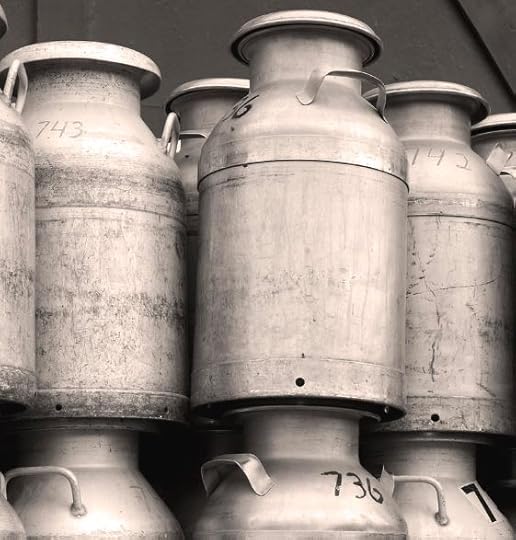
“The cheese had to be placed
in the car, five tiers high,
and the work
was very exhaustive.”
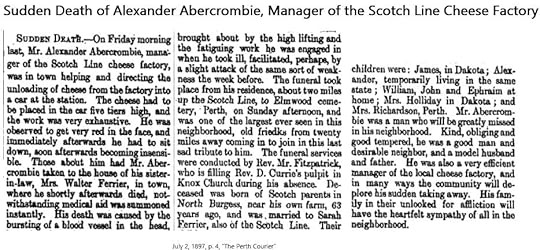
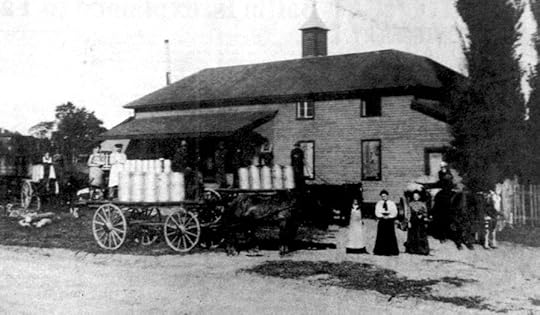
photo: Perth Remembered
Photo was taken around 1910 at the Scotch Line Cheese Factory
Ben Avery, the Cheese Maker, is in a white apron, standing beside the milk cans.
James Gibson and his nephew, John A. Gibson is on the wagon to the left side of the photo.
Sarah MacLennan and Mrs. James Allan are standing in the group of three women to the right of the photo.
December 1913 Fire
“Neighbours saved some fancy cheese the maker, Mr. Hough had, for a dairy show,
but the last day’s make of butter, about 350 lbs, was burned.”
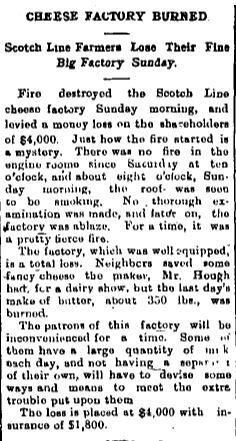
December 26, 1913, p. 1, “The Perth Courier”
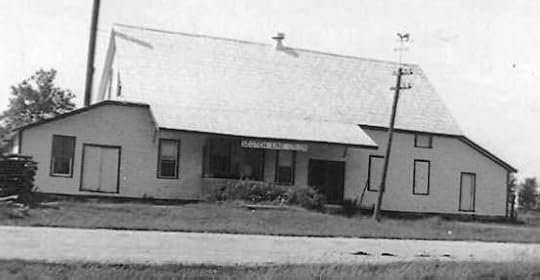
Scotch Line Cheese Factory, rebuilt, as it appeared in 1932

George McGinnis Retires
After 17 Years
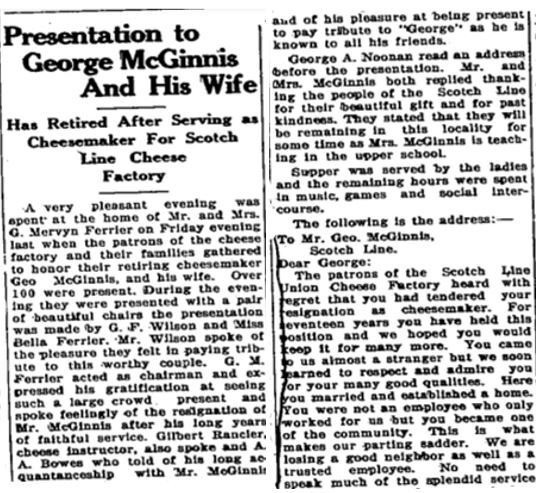

Nov. 20, 1941, p. 2, “The Perth Courier”
November 1965 Fire

“Fire of undetermined cause razed the Scotch Line Union Cheese Factory for an estimated loss of $40,000 Tuesday.
Rural Fire Chief, Arnold Darou and a ten-man crew fought the blaze from 5:30 p.m. until midnight. Saved was the nearby house owned by Clifford Kelford, occupied by the plant’s Cheese Maker, Lewis Kellar, who was away when the outbreak occurred.
Mervyn G. Ferrier, R.R. 3, Perth, Secretary Treasurer of the co-operatively owned factory yesterday consulted with the insurance company which had the plant covered.
“The fire represents a distinct blow to the 30 owner-members of the plant”, he said, “but a small consolation is the fact that the fire did not strike during our busy season.”
The factory normally operates from May until October 31st and had just recently been shut down for the winter.
Mr. Ferrier said the directors had as yet made no decision about rebuilding.
The factory was originally constructed 86 years ago, in 1879, and rebuilt in 1914.
Mr. Ferrier reported that last year’s total production of 130,000 lbs of cheese had been increased 20% this year. This means that this year a total of some 1,400,000 lbs of milk were processed. This year, too, a new can-washer had been acquired.
The enterprise has played an intimate part in the economy of the area, and a complete set of books detailing its history has been kept up to date since inception 13 years after Confederation.
Mr. Ferrier has been Secretary-Treasurer for 24 years. Before him, Charlie Dodds kept the books 21 years and Mr. Ferrier’s father, John, was Secretary Treasurer for the 20 years before that. Cecil Dodds, President, has held that office for 24 years. Vice President is Victor Mackler.
The Scotch Line Union Cheese Factory provided some of the milk which went into Perth’s Mammoth 22,000 lb cheese of bygone age, the world’s largest.
The decreased winter-time flow of milk provided by the owner-members will be shipped to various district dairies. Granted the factory is rebuilt by next May the normal seasonal milk surplus will go to the plant.”
Nov. 11, 1965, p. 1 “The Perth Courier”
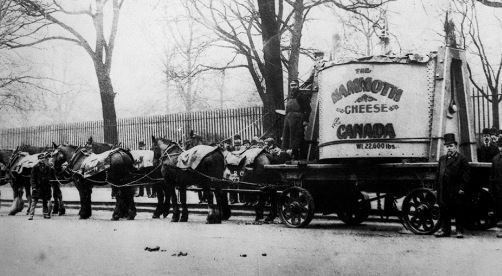
John Wiltsie was Cheese Maker in 1893 when the Mammoth Cheese was produced
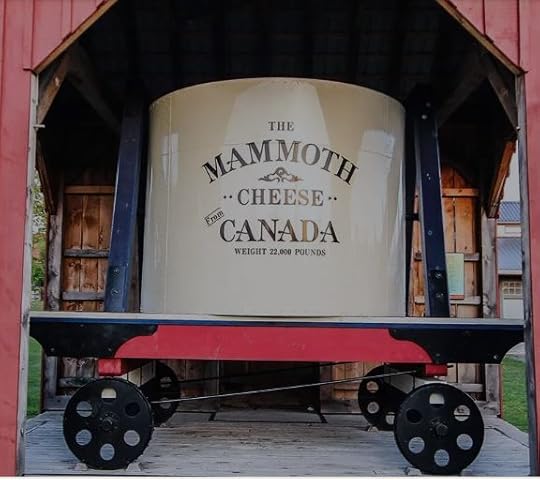
Lanark County’s famous Mammoth Cheese, a 22,000 lb cheese, shown on display in the Tay Basin, next to Crystal Palace.
Twelve area cheese makers donated milk to the project in 1893, for display at the World’s Exposition, to promote Canadian cheese around the world.
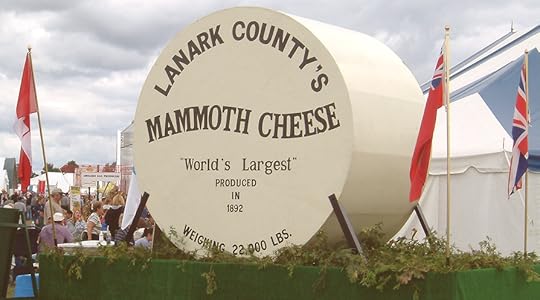
(The site of the Scotch Line Cheese Factory was later the location for Cliff Kelford’s Auto Parts business.)
*
The history of the Scotch Line Cheese Factory, and the Mammoth Cheese – part of our Lanark County Heritage, memories to be recorded and preserved for generations to come.
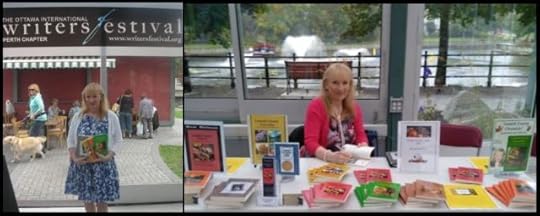
Arlene Stafford-Wilson
Member, Association of Professional Genealogists
Honorary Life Member, Lanark County Genealogical Society
Author of : “Lanark County Christmas”, “Lanark County Comfort”, “Lanark County Collection”, “Lanark County Calling”, “Lanark County Classics”, “Lanark County Connections”, “Lanark County Calendar”, “Lanark County Chronicle”, “Lanark County Kid”, & “Recipes & Recollections”
May 5, 2023
Port Elmsley – Drive-In Dreamin’
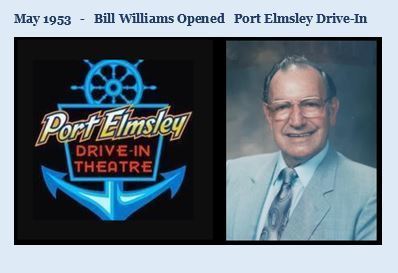
Someone decided one night long ago, that we should save a few dollars, and put a couple of people in the trunk of a car, so they could get in for free, at the Port Elmsley Drive-In Theatre.
I guess we can just chalk this one up, along with the other peculiar things that we did as teenagers. Luckily no one was hurt, but for the three bucks they each saved on admission, it was a pretty undignified way to arrive at the movies.
It’s possible that we weren’t the first ones to try that little stunt. After all, the Drive-In had been open for a long time before any of us had ventured there.

It was in September 1952 that ‘The Perth Courier’ ran a short article about a Drive-In being constructed at Port Elmsley. The article stated that it was the first to be fabricated in this district, and it was built by Gordon White of Ottawa for W.J. ‘Bill’ Williams, of Newboro.
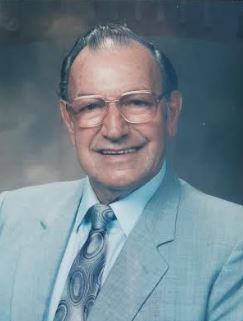
The article went on to say that it would be assembled on a ten acre property, and that the Drive-In would have a capacity for 300 cars. It would feature a design first of its kind in Ontario, where the projector booth would be in a two-story building, nearly 400 feet from the screen. This was a distance that was 150 feet greater than any of the other Drive-In theatres at that time. It was to open the following May of 1953, at a total cost of $75,000. True to their word, they opened on schedule, and called the new Drive-In ‘the Showplace of the Golden Triangle’.
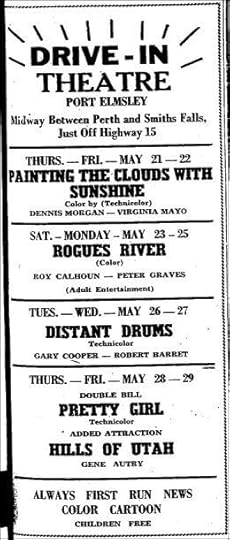
Port Elmsley was indeed a great location for a Drive-In theatre, because it’s situated about halfway between Perth and Smiths Falls. There were always droves of cottagers and tourists staying around Rideau Ferry, and the surrounding lakes in the summer. There were also many residents of the towns and villages nearby, that enjoyed a drive up Highway 15, on a warm summer night, to see some great movies.

Because the Drive-In opened in 1953, many folks had parked in that huge parking lot and viewed many movies on that big screen long before my friends and I ever made it there in the ‘70s. In fact, it was more than twenty years after it opened that it became one of our familiar haunts each summer, as we passed the nights away, under the stars.
Some of us were lucky enough to have gone to the Drive-In as children, dressed in pajamas, playing on the teeter-totter and swings between the first row of cars and the giant screen. As the sun sunk low in the sky, we were having the time of our lives. What could be better than staying up past your bedtime with a whole bunch of other kids, the aroma of popcorn in the air, and watching the cartoons at the beginning of the show?

Every kid knew the words to the concession jingle ‘Let’s all go to the lobby, let’s all go to the lobby, let’s all go to the lobby, to get ourselves a treat.” When we heard that song it was our cue to start heading back to our parents’ cars, because the movie would be starting soon. By the time they played the Chilly Dilly song, about the big, juicy, dill pickles, we were in the back seat, with our pillows and blankets, all ready for the show to begin. Much to the delight of most parents I’m sure, we were asleep by the time the second feature began, and this allowed them some peace and quiet, and time alone – well, almost alone.


We’d usually begin assembling all of our gear during the afternoon. First, we’d pack up a bottle of Windex, and a roll of paper towels, because there was nothing worse than having a big messy streak or some bugs splattered right in the middle of your window.
Mosquito coils were also vital to a relaxing evening. Because of the speaker hanging off of the front window, we weren’t able to close it all the way, so burning a mosquito coil would take care of any of the little pests that flew into the car. If none of the gang had any, we’d have to head out to Canadian Tire on Highway 7, and pick some up before the show. We’d place one of the little green coils on its small metal stand, set it on the dashboard and light it up. Many years later I happened to read on the side of the package that those coils were for outdoor use only. Oh dear!


A couple of pillows and a blanket, were a nice touch, and made movie-viewing a comfy, cozy event. We’d also bring a small flashlight, because nothing was worse for us girls than stumbling around on the gravel path, trying to find our way to the washroom, on a dark, moonless night; especially right after watching a scary scene in a horror movie. That just didn’t work for us. Sometimes we’d bring a roll of t.p. from home, in case they ran out, which happened once in a while during the all-night movie marathons.

I still recall the crunch of the gravel, as we slowed down to enter through the gates, into the Drive-In, and began scouting for a good spot. A good spot to us was front-row-centre, and enough space for the three cars to park side by side, so that we could socialize. We also had to make sure that all three speakers worked, so we would pull into the spots and test the speakers, otherwise we’d have to move all three cars to a new location, maybe a row behind. Of course every row farther back that you were you would have to contend with people getting in and out of their cars in front of you or turning on their cars to clear their windows because they were fogged up for some reason. So, the best real estate in the lot was the front row, right in the center of the screen, and if we went early enough the best spots would be ours.
I think the lads liked having spots near the front, not just for the sake of the movie, but so that their cars were together, and very visible in the front row. There’s no denying that they all had sweet cars. Those three cars managed to get some looks, touring around town, and had been known to burn up more than a little rubber on the quarter mile runs down Roger’s Road.
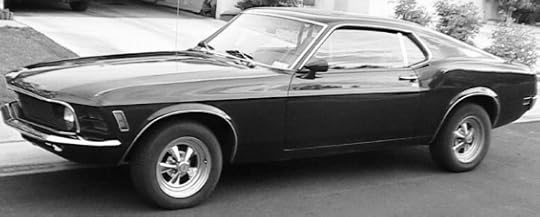

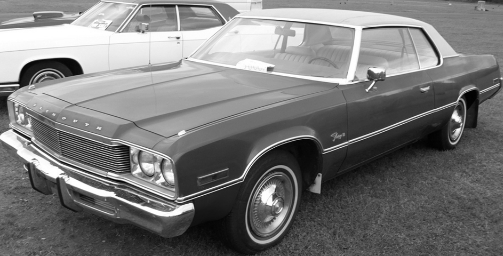
The warm summer air was filled with strains of Foreigner’s ‘Hot Blooded’, or Led Zeppelin’s ‘Stairway to Heaven’, and typically, a little bit of our favourite space-cowboy, Steve Miller, singing “The Joker’; a song that you could say became a symbol of the times. Some have said that it was an era of music like no other, before or since, and the sounds of our generation could be heard throughout the parking lot of the Drive-In, on those sultry summer nights, in Port Elmsley.
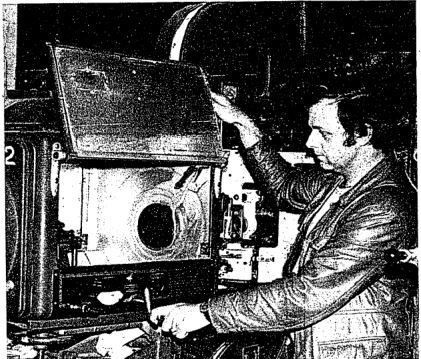
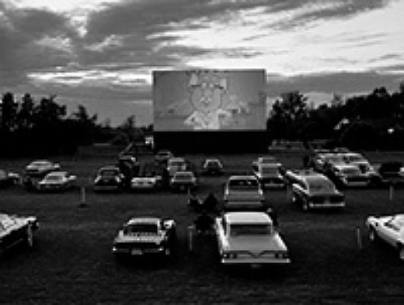
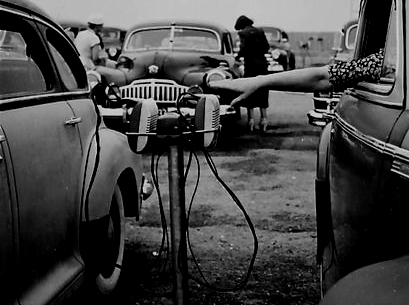
As the sun slid down lower in the sky, the horizon glowed, first in a dusty pink, then a soft purple. There was always one car that began honking their horn, because they believed that it was dark enough to see the movie. After a minute or two, more people started to honk, and then shortly after that the show would begin.
One of the things that we enjoyed the most were the ‘Dusk to Dawn’ shows, where the first movie would begin at dusk, and the movies would continue all night, until the early morning, when it became too light to see the picture on the screen. The movies were played back to back, and were often horror films like ‘The Exorcist’, or ‘The Omen’, or ‘Jaws’. I recall one night that my friend and myself, even after having consumed large quantities of pop, did not want to use the washroom, just in case that giant crazy shark ‘Jaws’ had somehow compromised the plumbing system out in Port Elmsley. We just weren’t taking any chances.
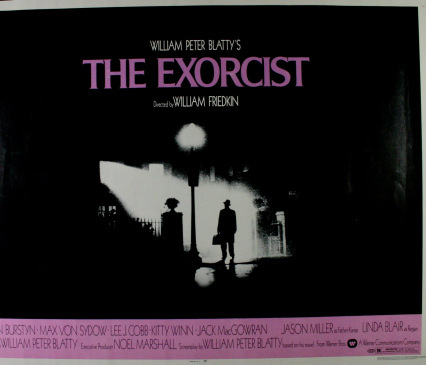

We saw many nights come and go in Port Elmsley. There were some beautiful, sleek, muscle cars in those days, parked row after row, paint glistening in the moonlight. We made numerous trips to the concession stand, in an attempt to fill our unquenchable teenage appetites. We even had a few scary trips in the dark, giggling on our way to the washroom and back. We screamed a few blood-curdling screams, as did some of the folks in the neighboring vehicles one evening, I recall, as the character Jason appeared in his hockey mask in the thriller ‘Hallowe’en’.
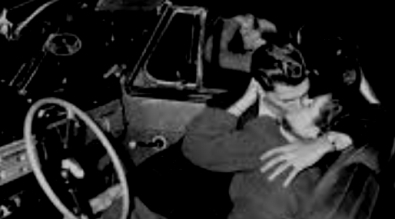
Today, the Port Elmsley Drive-In is one of a handful of drive-ins still operating in Ontario. Leave it to the folks in Lanark County to know a gem when they see one, and to continue to go out, and enjoy movies, under the stars. I hope that in the future that the little kids in their p.j.s, young people, and not so young people, will take the time to visit the drive-in and have as much fun as we did. Take a trip to Port Elmsley and make some of your own memories!
…….
In its heyday, Port Elmsley had many residents, and some of the family names that were common in that area were: Armstrong, Taylor, Stone, Hunter, Weatherhead, Best, Couch, Wicklum, Weekes, VanDusen, Seabrook, Shaw, Sherwood, O’Hara, Moore, Dudgeon, Lavender, Findlay, McTavish, McVeety, Beveridge, and Clements.
…..

Member, Association of Professional Genealogists
Honorary Life Member, Lanark County Genealogical Society
Author of : “Lanark County Christmas”, “Lanark County Comfort”, “Lanark County Collection”, “Lanark County Calling”, “Lanark County Classics”, “Lanark County Connections”, “Lanark County Calendar”, “Lanark County Chronicle”, “Lanark County Kid”, & “Recipes & Recollections”
Stories about the Port Elmsley Drive In:Spend a hot summer night at the Port Elmsley Drive-In, and meet some of the fascinating people, with memories from former owner, Jan Stepniak, and recollections from Laura Williams, daughter of founder and owner, Bill Williams. Read their accounts of those special nights under the stars, and what really happened behind the scenes of this beloved local gem, in “Lanark County Collection: Winding Our Way Down Memory Lane”
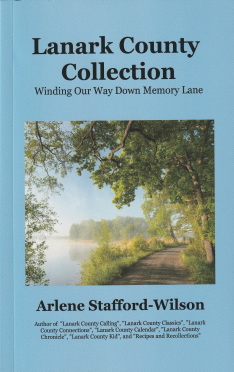
…….
Available at:
The Book Nook, Perth, ON – https://thebooknookperth.com/
Spark Books and Curios, Perth, ON – https://sparkperth.ca/
Mill Street Books, Almonte, ON – https://millstreetbooks.com/
or at http://www.staffordwilson.com

The story “Dusk to Dawn in Port Elmsley” is part of a collection of stories in the book “Lanark County Chronicle”
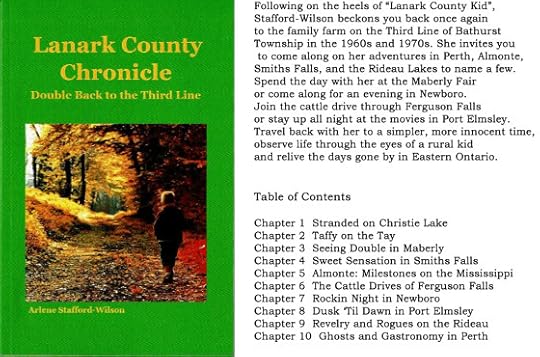
Available at The Book Nook, and https://sparkperth.ca/, in Perth, Mill St. Books in Almonte,
or on online
May 4, 2023
Meet Me in DeWitt’s Corners
‘The Corners’ was a phrase heard often in our small community. The Corners referred to DeWitt’s Corners, a mile or so west of our farm, and was located at the crossroads of the Third Line, Munro’s Side road and Cameron’s Side road.
The early settlers in Bathurst Township were keen to have their own church instead of driving to St. John’s Church in Perth, or St. Bridget’s Church in Stanleyville. Roads were treacherous at times in the winter, with deep snow, sometimes freezing rain, or both. John DeWitt, son of a pioneer settler, and his wife Mary Neil knew there was a need for a Roman Catholic Church to serve the growing community. Hoping to improve the situation, they made a promise to donate the land to build a church.
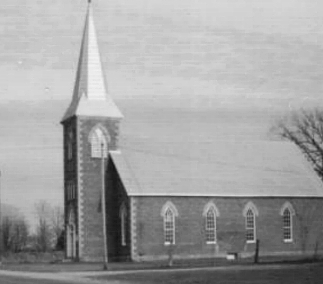
The construction progressed quickly, and the first mass was held on November 23, 1889. The church was packed that day, and this stately building has served generations of families around DeWitt’s Corners and the area for over 125 years and counting.
A bike ride down the Third Line often meant that my friends and I would gather around the millstone at Cavanagh’s general store. It was a central meeting place where we could sit and talk. Between us, we could usually scrounge together enough pocket change to buy some penny-candy at the store.
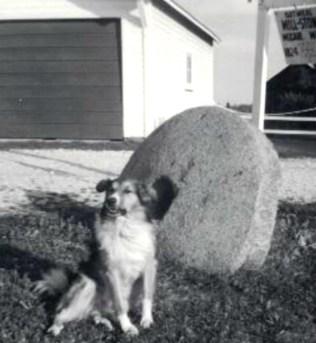
DeWitt’s Corners was a busy place in the 1960s and 1970s, with cars stopping at Cavanagh’s store for gas and groceries, or zooming up the Third Line toward Christie Lake. Christie Lake was a tourist destination with accommodations of all kinds for seasonal visitors. Norvic Lodge, Arliedale Lodge, and Jordan’s Cottages, were some of the busiest places in the summer months.
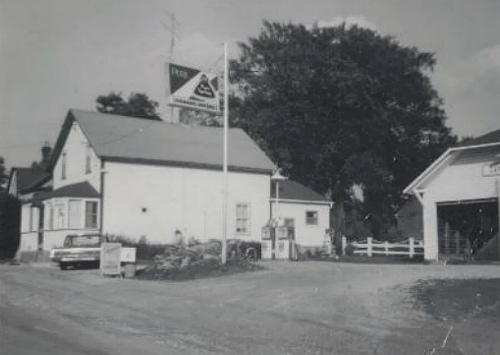
Across the Third Line from Cavanagh’s store was the old Bathurst cheese factory. The factory produced cheese until about 1954 and then ceased operations as other larger factories began to edge out the smaller producers.
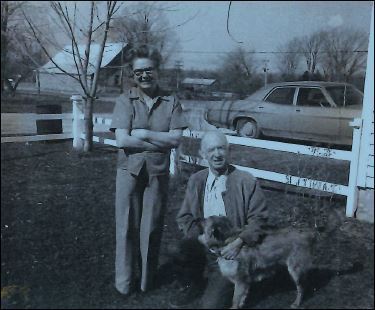
Not far from the ‘Corners’, just up Cameron’s Side Road was the little white school house – S.S. # 4 Bathurst, where many of the members of our family attended school. Mary Jordan taught all eight grades, keeping order in a compact classroom, heated with a wood stove, and bursting with energetic farm kids.

2nd row – Standing Kim Kyle,Betty Conboy, Judy Radford, Janice Jordan , Nancy Radford, Beverly White, sitting in front of Nancy Radford is Bobby-Jean Gamble and beside her is Mary White
Beside Kim Kyle is Brent Cameron, Bryan Tysick, Maxine Closs with her arms around Judy Radford, behind her is Kenny Perkins, Brad Kyle, Susan Turnbull, Darlene Charby,Back row Randy Sargeant, Kent Shanks, Mrs Carrie Barr, Doug Jordan, Brian Miller and Mark Greenley
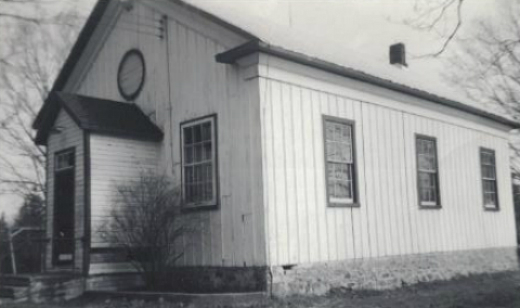

When Mary Jordan wasn’t busy teaching eight different grades, she coached the DeWitt’s Corners softball team. Both of my sisters Judy and, Jackie, played on the championship team in 1959. My brother Roger was on the team in 1964.
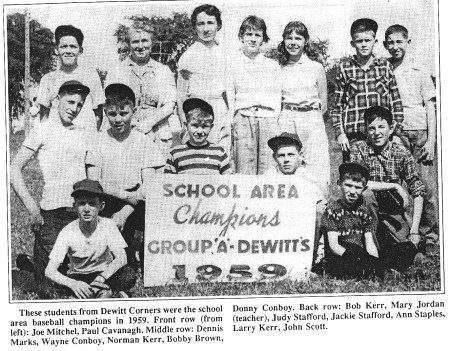
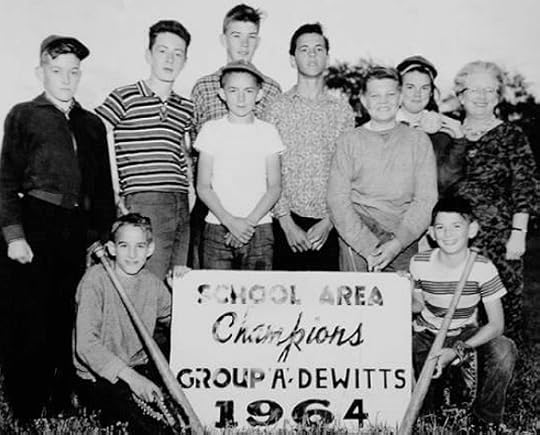
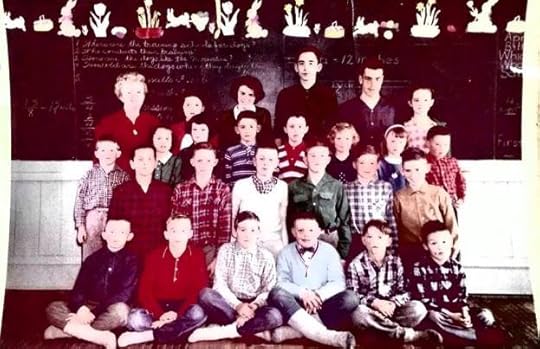
Interior photo of S.S. # 4 Bathurst School
Front row Earl Conboy, David Scott, Arthur Perkins, Ron Brown, John Conboy, Bill Kyle
2nd row Arnold Perkins,Joe Mitchell, Roger Stafford, Norm Kerr, Bob Perkins,Paul Cavanagh
3 rd row Peter Kerr, Betty Conboy, Anne Kerr, Bill Cavanagh, Carl Gamble, Judy Radford, Janice Jordan, Doug Jordan Back row Mary Jordan, Kim Kyle, Connie Conboy, John Scott, Richard Cooke, Sharon Doyle
—–
There always seemed to be a sense of history in DeWitt’s Corners, and intriguing tales of the early settlers were told and re-told around that small hamlet. Most of us in the community were aware that Helen Cavanagh was a member of the DeWitt family, but many may not have realized how far back her roots stretched to the earliest settlers.
William DeWitt, and his wife Margaret Noonan DeWitt had a large family of eight daughters: Helen Mae DeWitt who married Jim Cavanagh, Margaret Gertrude DeWitt, Vera DeWitt who married Ed Brady, Carmel DeWitt Matthews who settled in San Francisco, California, Jean DeWitt Garry, Mary DeWitt O’Hara, Josephine DeWitt who settled in Toronto, and Sophia DeWitt.
Cavanagh’s Store
The store opened on June 3, 1947 – carrying a full line of groceries, confectionaries, and tobacco products. Along with groceries and everyday sundries, Cavanagh’s store also sold gas supplied by Esso, a branch of Imperial Oil. Locals and cottagers, along with campers at nearby Christie Lake, were all pleased to hear that there would be a general store in the area, and they would no longer have to drive to Perth to pick up daily necessities.
Jim and Helen Cavanagh operated the popular neighbourhood store for nearly four decades until they retired in 1985.

Many members of this proud community played a part, and their descendants carry with them the legacy of this historical settlement in Lanark County:
Adams, Allan, Blackburn, Blair, Brady, Cameron, Carberry, Cavanagh, Chaplin, Closs, Conboy, DeWitt, Dixon, Doyle, Fife, Foster, Gamble, Heney, Hogan, Johnston, Jordan, Keays, Kerr, Kirkham, Korry, Kyle, Leonard, Majaury, Menzies, Miller, Mitchell, Morrow, Munro, Murphy, Myers, Noonan, Palmer, Perkins, Popplewell, Radford, Ritchie, Somerville, Scott, Siebel, Stafford, Stiller, Truelove, Turnbull, and Tysick.
Thanks to JoAnne Cavanagh Butler for contributing the photos, and thanks to Janice Gordon, JoAnne Cavanagh Butler, Roger Stafford and Beverly Miller Ferlatte for all of their help identifying our neighbours and classmates in the photos!
For more information about the history of DeWitt’s Corners, and the people who settled in the community, you can read the full version of the story in “Lanark County Classics: A Treasury of Tales from Another Time”
Available at The Book Nook, Perth, Ontario https://thebooknookperth.com/product/lanark-county-classics-arlene-stafford-wilson/
Spark Books and Curios in Perth, Ontario https://sparkperth.ca/
Mill Street Books in Almonte, Ontario https://millstreetbooks.com/
and
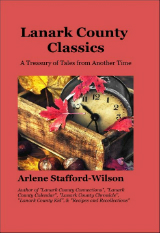
Arlene Stafford-Wilson
Member, Association of Professional Genealogists
Honorary Life Member, Lanark County Genealogical Society
Author of : “Lanark County Christmas”, “Lanark County Comfort”, “Lanark County Collection”, “Lanark County Calling”, “Lanark County Classics”, “Lanark County Connections”, “Lanark County Calendar”, “Lanark County Chronicle”, “Lanark County Kid”, & “Recipes & Recollections”

May 2, 2023
Walter Cameron: Forging in Fallbrook
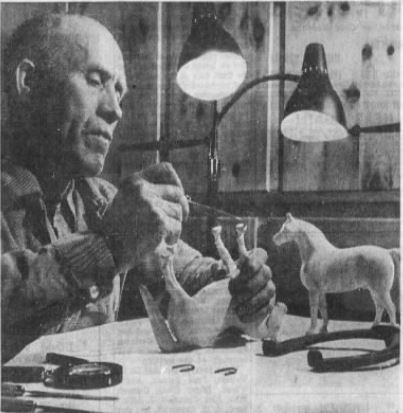
Sometimes we look at a painting or sculpture, and we wonder what inspired the craftsman to create such a masterpiece. For one local artist, Walter Cameron, this is not the case. Walter was born and raised in one of the most picturesque spots in the country. Like many communities in Lanark County, Fallbrook is situated near several rivers and streams, and in fact, is named after the Fall River, that flows right through the community.
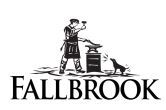
Although some would argue that the autumn is the prettiest time of year in Fallbrook, I would have to say that the spring, just after the snow melts, and nearby Bolton Creek, and neighbouring rivers of the Clyde, and the Mississippi, show their true spirit. It’s the fast, powerful force of the waters around Fallbrook, in the early part of the spring, that reminds us how this water powered the mills back in the old days. At one time in Fallbrook, there was a carding mill, a shingle and saw mill, two wooden mills, and a grist mill, harnessing the energy from the rivers to produce goods.
In the years to come, however, it may not be the mills that are remembered, it will be the blacksmith shop. Walter’s father, James Lockland Cameron, came to Fallbrook from Lachute, in 1888, and set up his blacksmith trade, in a small wooden structure, built by the founder of Fallbrook, William Lees, in 1865. Alongside the blacksmith shop, his father built a woodworking shop, and in its busiest time, employed five men. They built sleighs, cutters, and buggies in the wood shop, and made ploughs in the blacksmith shop before there were motorized farm tractors.
Walter’s father – James Lachlan Cameron, passed away in March, 1950, age 95:
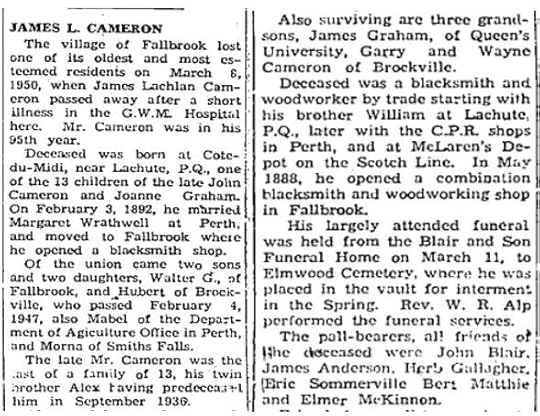
At the height of the blacksmithing business, Walter once estimated that they were using 100 pounds of horse nails in a month. He began to work for his father in the shop in 1912, at the age of 17. He worked at the trade for many years, but as the horseless carriage became increasingly popular, the blacksmith trade began falling off, by 1935. He carried on with his trade as long as he could, but finally retired in the 1940’s, when cars became ‘king.
“In 1925, he married the former Isobel Blair, of Brook. They have a son, Graham Cameron, who works with the Department of National Defence, in Ottawa.”“The Ottawa Journal”, Dec. 14, 1957, p. 17Maybe it wasn’t a complete loss when Walter retired from his ‘smithy’ shop, because it meant that he had some spare time on his hands. Although whittling objects from wood had always been a hobby of his, he began working more seriously on his wood carvings in 1956.
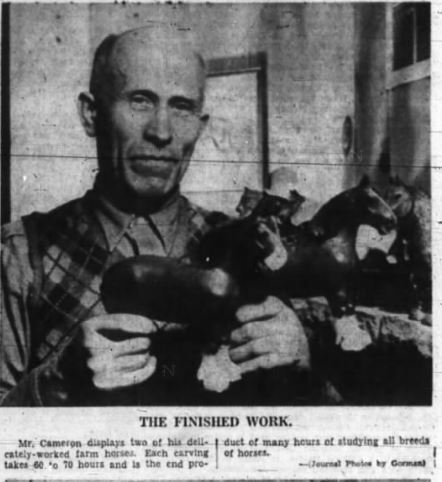
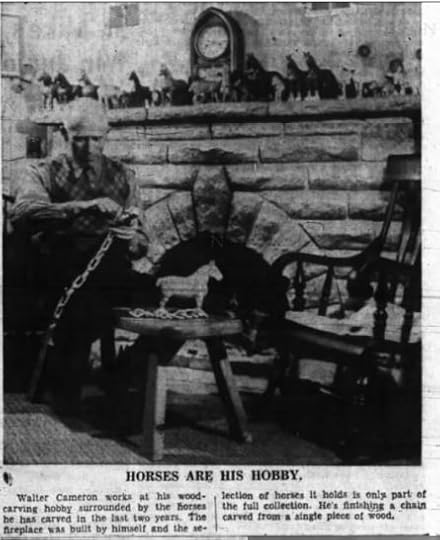
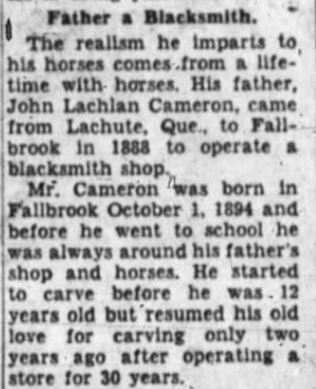
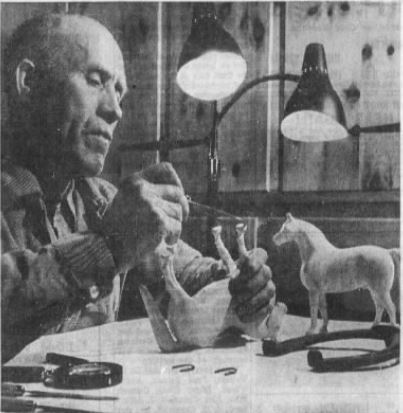
By the early 1960s, Walter was already becoming well known for his wood carvings. He carved mostly cows and horses, but also did carved bulls and deer. He began to make a name for himself, and was asked by Upper Canada Village, to carve some animals for them to display at the park. Considering all of the intricate detail in the carvings, it was surprising that he used a simple jack-knife to do most of his work. He loved to study the animals that he carved, and he and his wife attended all of the local fall fairs, where he sat for hours, observing the animals.
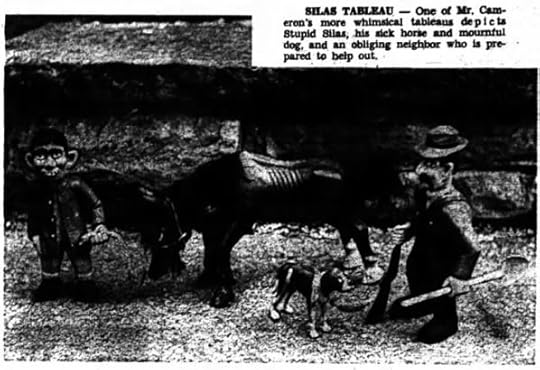
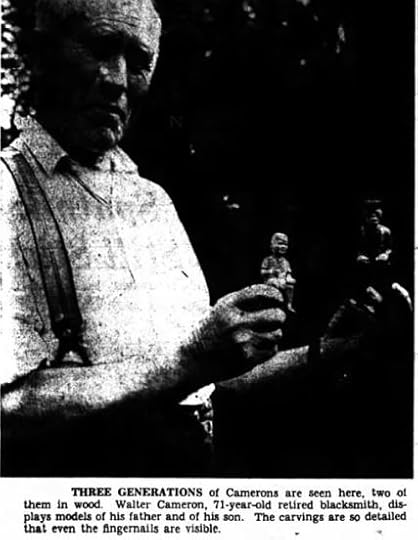

Many people in the area were busy in 1966 with ‘Centennial Projects’, to celebrate the 100th anniversary of confederation in 1967. Walter’s project was to remember the Ox, and the contribution made, by this humble animal, to the early days, when the pioneers settled the area. The back of his ox-shoe plaque reads:
“Oxen played an important role in developing the early Canadian frontier. These slow-moving, stalwart animals, which were a common sight around the time of Confederation, required individual shoes, for each half of the cloven hooves. This shoe has been hand-forged, by Walter Cameron, in his Blacksmith shop, at Fallbrook, Ontario, which he and his father operated, for some 90 years. Eleven Canadian woods have been selected, to display these shoes, symbolic of the Canadian scene, of a century ago.” Walter Cameron
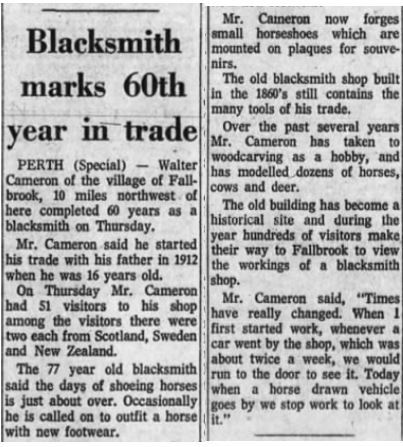
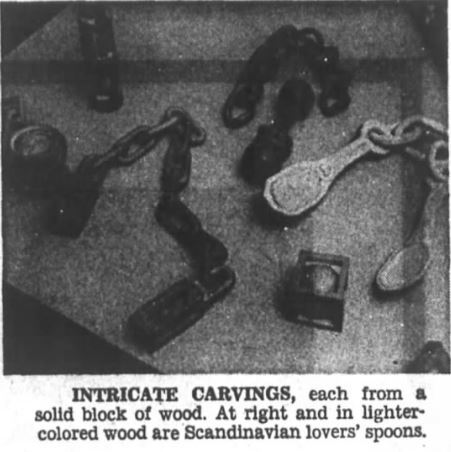
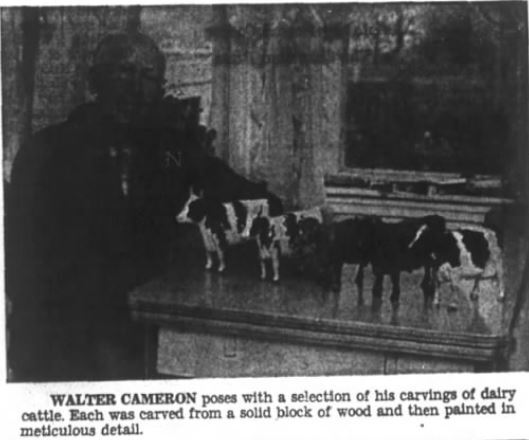
He carved every fall, and through the months of long winter evenings, in their home, near the blacksmith shop. He always used good basswood, and some of his pieces were extremely intricate and complex. He once carved a small wooden box frame, and inside was a round ball, which could be rotated. It was carved from one block of wood. He also made wooden chains, also carved from one piece of wood. Of course carving cows and horses were his main artistic pursuit.
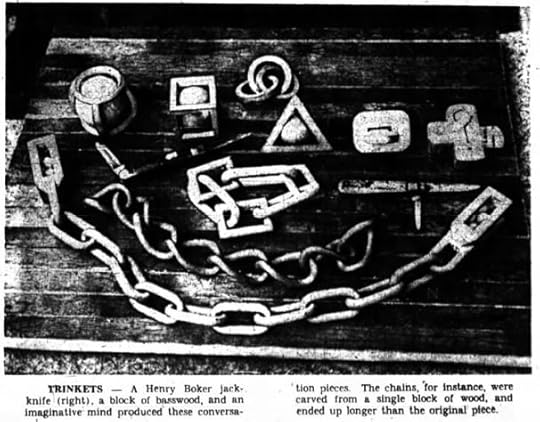
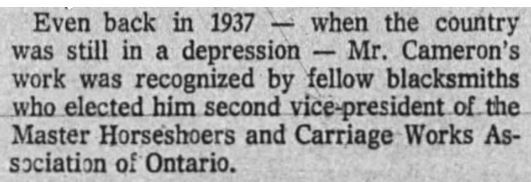
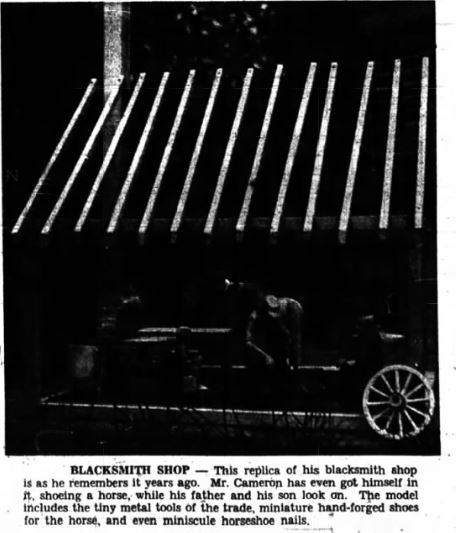
“His favourite tool is a 60-year old, Henry Boker, Jackknife. He observed that any boy in the early 1900s, who possessed a Henry Boker jackknife, was the envy of all his friends.”

One of his most interesting carvings, was a wooden miniature replica of the old blacksmith shop. It was complete with human figures, and depicted a horse, being shod. In order to forge the tiny horseshoes he had to first make miniature tools. The replica shows his father, seated on a nail keg, and nearby seated on a box is Walter’s son Graham, as a little boy. Also depicted in the scene is his favourite grey horse, being shod by Walter himself, with a tiny farrier’s hammer in his hand.
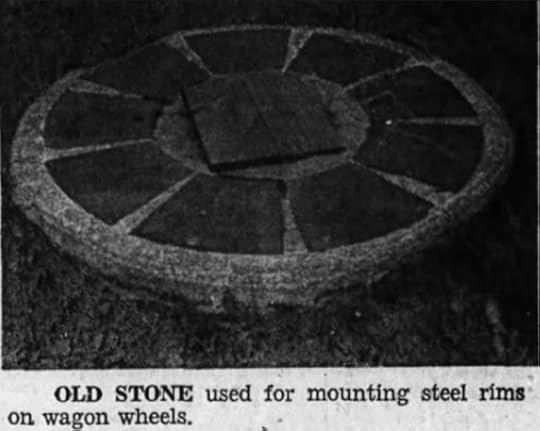
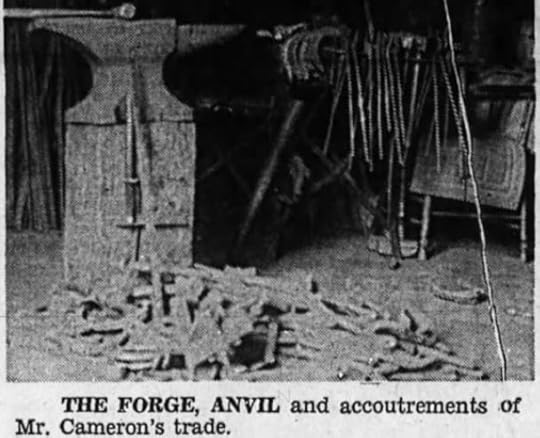
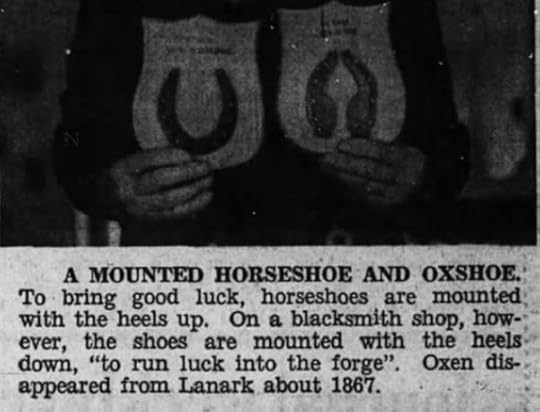
Over the years, Walter became a local legend around Lanark County. He’d been featured on many different television programs in the 1970s and 1980s, such as: “Kingston Calendar”, “Four for the Road” “This Land” and “From Now On”. He was a frequent guest speaker at the Perth Museum, and he also gave tours of his blacksmith shop to both locals and tourists.

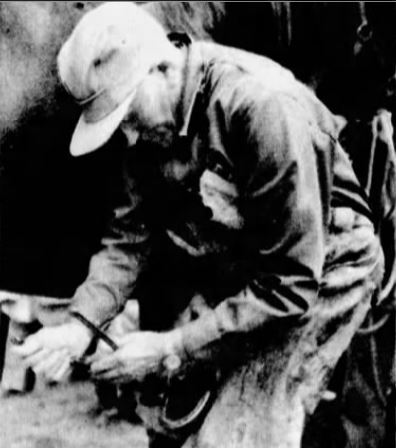
Walter’s shop became a regular stop, on what was known as ‘Byway Tour No. 3’, and it wasn’t unusual for over 200 people to visit, during busy weeks. There was even talk at one time of the National Museums of Canada buying all of Walter’s carvings, and turning his old blacksmith shop into an historical site. Over the years, thousands of people visited Walter in his shop. Often in the summer, there were bus loads of people coming to see his blacksmith shop. Walter never charged, although it took a great deal of his time. At one time he even had a sign posted with his opening hours each day.
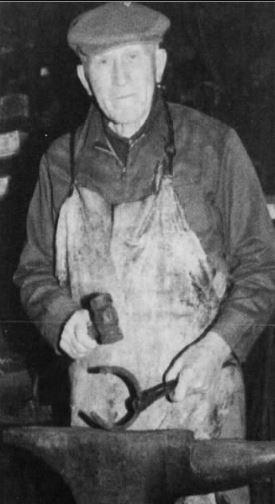
By the time I met Walter, he was in his late 70s, and had reduced his opening hours to 9-11 a.m., and 2 – 5 p.m., daily. He was always firm about closing his place after the middle of August, so that he and his wife could attend local fairs – in Perth, Almonte, and Richmond. He said that he would sit and watch the horses and cows, and make sketches for his future wood carvings.
Walter was always keenly interested in passing on his knowledge of the blacksmithing trade to the younger generation. He often spoke at the local schools, and brought samples of both his tools of the trade, as well as his wood carvings.
I spoke with Walter, at the Perth High School, in May 1974. There was an Arts and Crafts Exhibit in the Resource Center of our school. I asked him about his carvings, and the drawings that he worked on, before he sat down to carve a new piece. He was a kind man, and eager to share his knowledge with those of us in the younger generation.
Many other local artists attended, set up displays of their work, and were there for the full day, to answer questions from the students. Along with Walter, were local Sculptor John Matthews, potter Marion Sinn, and the ladies of St. Paul’s United Church worked on a quilt. Other artists there were Dorothy Moffatt, Mrs. M.E. Forrester, Jill Lewis, Pat McGonegal, Miss C. Rice, Mrs. Meuser, Frank DeLaute, Vernon MacPherson, and Mrs. O. Scott.
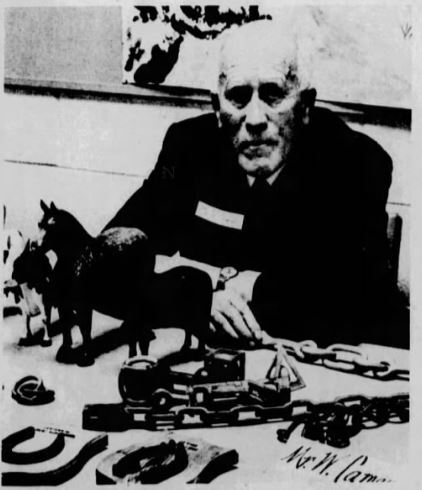

I could see by the way Walter smiled, and patiently answered question after question from the students that day, that he really enjoyed spending time with young people, and sharing his knowledge. He was fascinating to listen to, and told us that he had hung around the blacksmith shop as a young lad, and he used to watch the men and listen to the old stories. He talked about the old days, when cars were first driven on the roads, and they would hear one coming, the men in the shop would all stop working, and go out to watch. He told us that it was the opposite in the 1970s. People were used to cars, and when they heard a horse go by, they would run outside to watch.
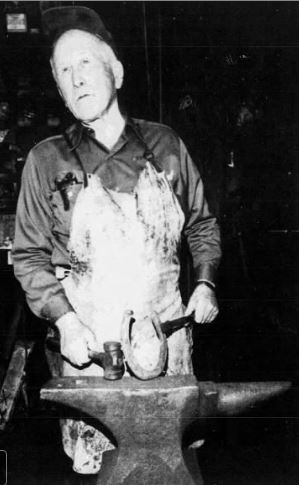


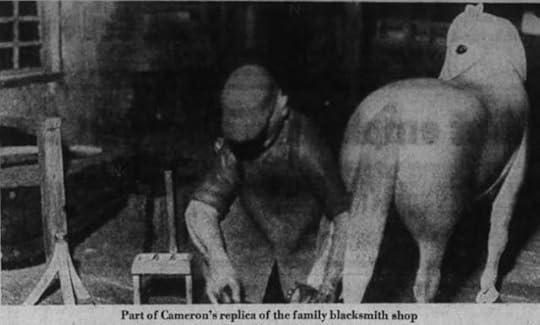
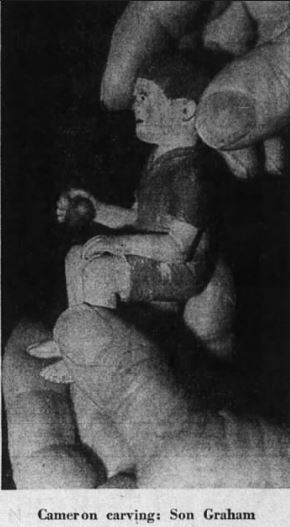


Over the decades, thousands of people visited Walter in his shop, and his reputation as an artist and storyteller grew. To ensure that his story reached a wider audience, Audrey Armstrong, a neighbour of Walter’s, wrote a book about him in the spring of 1979 – “Walter Cameron, the Blacksmith of Fallbrook”. She tells in her book how he came from the time of the horse and buggy, carried through his life the memories and knowledge of the lost art of blacksmithing, and chose to share it with others.
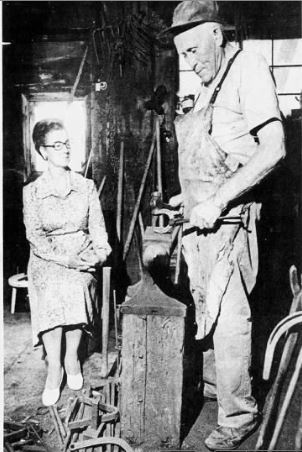
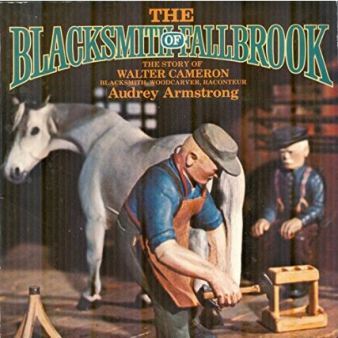
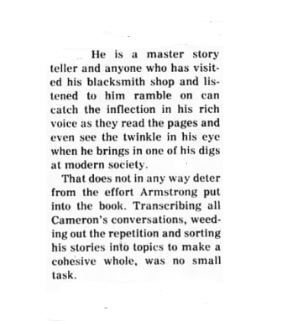
Walter was an admirer of Longfellow, and his poetry, and often recited his work to visitors, as part of the tour of his blacksmith shop:

Walter Cameron lived a long life, and even on his 90th birthday, over sixty people turned out at his blacksmithing shop, to watch him shoe a horse. His hands were still strong, and his mind was as clear as ever. As usual, he answered questions, and shared a bit of his own philosophy of life, as he often did. He loved people, and wanted to share his knowledge and talents with them. In her book about Walter, Audrey referred to him as “Lanark’s Living Legend”. Walter truly was a living legend.
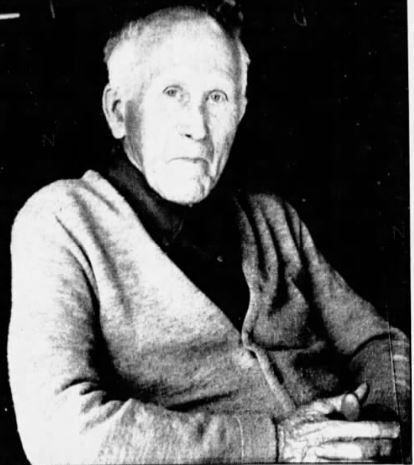
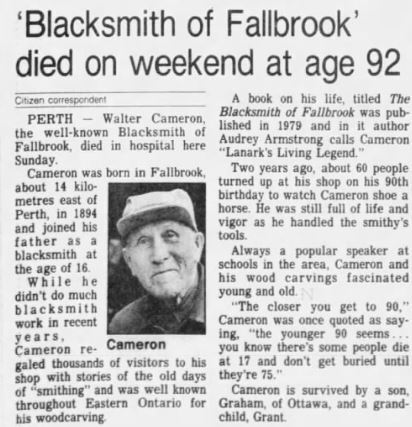
Many of Walter’s carvings were auctioned off in the summer of 1987, by local auctioneer, Charles Hollinger
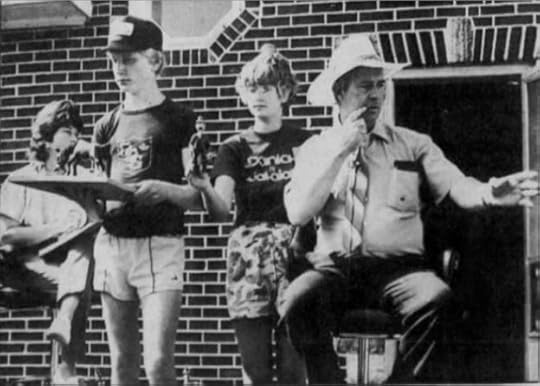

“The Cameron family donated one of Walter’s best-known works, a carved miniature blacksmith shop, to the Perth Museum, and kept a few carvings and mementos for themselves.”
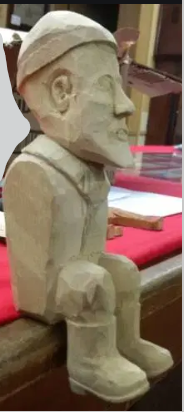

“Graham Cameron (Walter’s son), and David McCormick, present Walter Cameron’s wood carving tools to Keith Kerr, Reeve of Tay Valley Township”
“The Perth Courier”, July 11, 2013Although he passed from this life, late in November, of 1986, Walter Cameron left a legacy, not only of his beautiful carvings, but the stories that he shared with many of us, and we are all the richer for having known, “the Blacksmith of Fallbrook”.
Early families of Fallbrook: Ashby, Bain, Blair, Buffam, Ennis, Donaldson, Foley, Keays, Playfair, McKerracker, Smith and Wallace“Walter Cameron: Forging in Fallbrook”, an excerpt from ‘Lanark County Kid: My Travels Up and Down the Third Line’, ISBN:978-0-987026-16

Member, Association of Professional Genealogists
Honorary Life Member, Lanark County Genealogical Society
Author of : “Lanark County Christmas”, “Lanark County Comfort”, “Lanark County Collection”, “Lanark County Calling”, “Lanark County Classics”, “Lanark County Connections”, “Lanark County Calendar”, “Lanark County Chronicle”, “Lanark County Kid”, & “Recipes & Recollections”
available at local stores or email: lanarkcountybooks@gmail.com
April 24, 2023
St. Vincent de Paul Church – DeWitt’s Corners

Summer in the country was a time for swimming in the Tay River, hanging out with friends at the millstone at Cavanagh’s general store, and regular bike rides up and down the Third Line. There were farm tractors, hay-wagons, mothers outside hanging their washing on clotheslines, and daisies and black-eyed-Susans waving in the ditches, as I flew by on my old red bike.
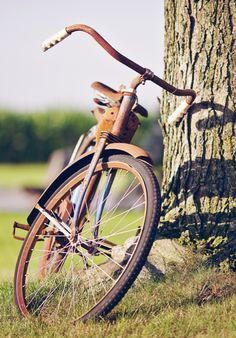
I always passed by the familiar farms and houses along the way – Mitchell’s, Conboy’s, pedaled like lightning past Heney’s, so their dogs couldn’t catch me. I continued past Radford’s, Siebel’s, Mitchell’s, Kerr’s, Closs’, heading up the Third Line toward Kyle’s, Perkins’ and Doyle’s when one day, something unusual caught my eye.
A stylish wedding party was entering St. Vincent de Paul Church; a bride in a flowing white gown, three bridesmaids dressed in pastel pink, carrying matching nosegays. Several cars were parked outside, decorated with pink and white tissue flowers. I pulled over to the side of the road to watch the procession. The old Catholic church had been around for as long as I could remember, and appeared as proud and majestic as ever on that hot summer day so long ago.
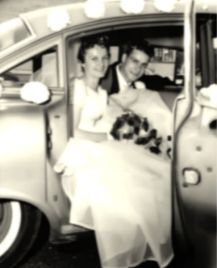
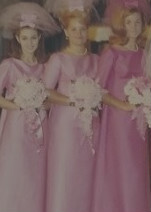
The early settlers in Bathurst Township were keen to have their own church, instead of driving to St. John’s Church in Perth, or St. Bridget’s Church in Stanleyville. Roads were treacherous at times in the winter, with deep snow, sometimes freezing rain, or both.
Long before St. Vincent de Paul Church was built, Roman Catholic services were held for 69 years, in the home of Mrs. Ed. Lee on the Third Line.
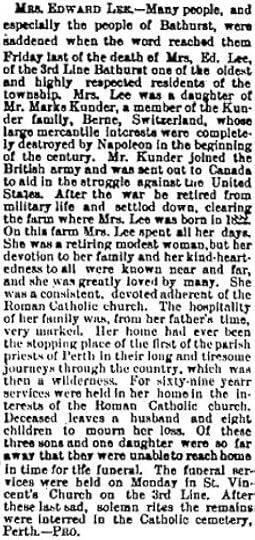
The people of Bathurst petitioned Bishop James Vincent Cleary for a church of their own. They needed a suitable, conveniently located place to erect a new church building.
John DeWitt, son of a pioneer settler, and his wife Mary Neil knew there was a need for a Roman Catholic Church to serve the growing community. Hoping to improve the situation, they made a promise to donate the land to build a church.
The paperwork was completed, and the land on lot 11, between the 2nd and 3rd concessions of Bathurst Township was donated by John and Mary DeWitt on July 26, 1889. To ensure that the transaction was legal, the land was sold for the token sum of one dollar to the Kingston Diocese of the Roman Catholic Church.
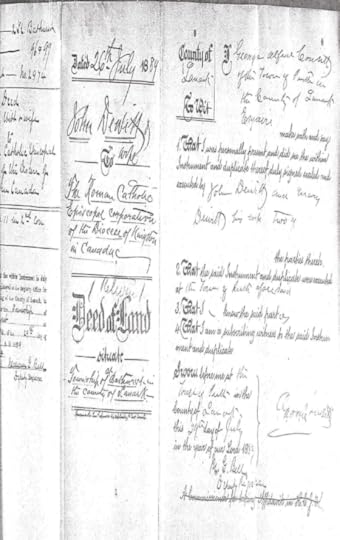
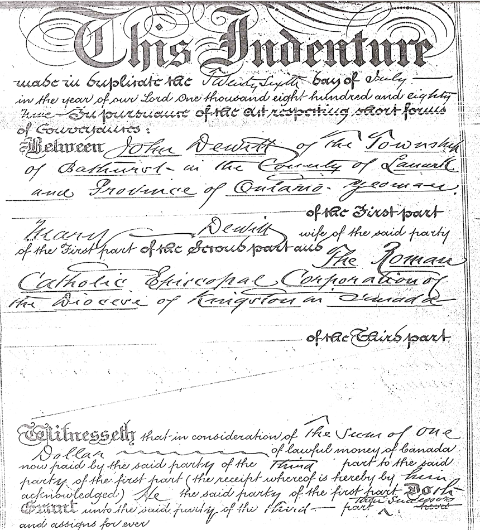
The construction progressed quickly, and the first mass was held on November 23, 1889. The church was packed that day, and this stately building has served generations of families around DeWitt’s Corners and the area for over 125 years and counting.
Pastors who have served St. Vincent de Paul:Rev. T.P. O’Connor 1889-1899
Rev. John O’Brien – 1899-1901
Rev. J.H. McDonough – 1901-1912
Rev. P.J. Keaney – 1912-1917
Rev. J.J. Keeley – 1917-1926
Rev. J.V. Meagher – 1926-1928
Rev. L.B. Garvin – 1928-1934
Rev. Walter Whalen – 1934-1940
Rev. J.W. Callahan – 1940-1947
Rev. W.L. Terrion – 1947-1952
Rev. J.C. LeSage – 1952-1976
Father Karl Clemens – 1976 – 1983
Father Richard Whalen – 1983-1985
Father Liam Tallon – 1985 – 1993
Father Karl Clemens (back) – 1993 – 1998
Father Lindo Molon – 1998 – 2006
Father Mark Ruckpaul – 2006 – 2012
Father Aidan Dasaah – 2012 – 2014
Father Jan Kusyk – 2014 –
………………………………………………………………………………………………………………………………………………
One of the weddings in the early days of St. Vincent de Paul Church – Henry Edmund Hagan, son of Hugh Hagan and Agnes Bennett, Westport, married Anna Victoria Jackman Hagan, daughter of John Jackman and Matilda Nagle, Wemyss, on 25 September 1918. Henry was 25 and Anna was 17. (according to Richard Frizzell, their grandson on his mother’s side – ” Family history has it that she married so young in order to escape having to rear her 4 brothers and sisters after her mother passed away in 1916.”)
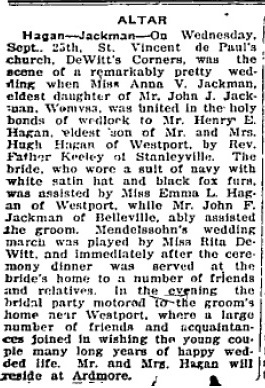
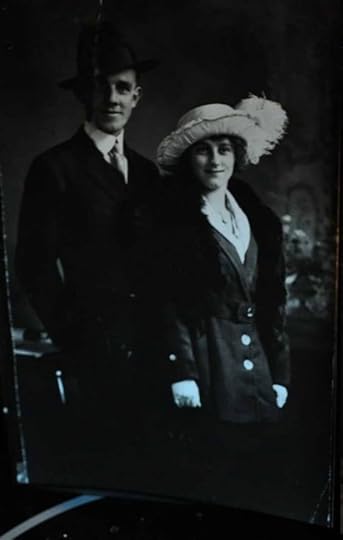
According to their grandson, Richard Frizell, “Henry and Anna farmed up on the mountain in Westport until 1956 or 57. They sold the farm and moved to Glen Tay. They had 5 children; my mom, Vera, was the oldest girl.”
……………………………………………………………………………………………………………………………………………
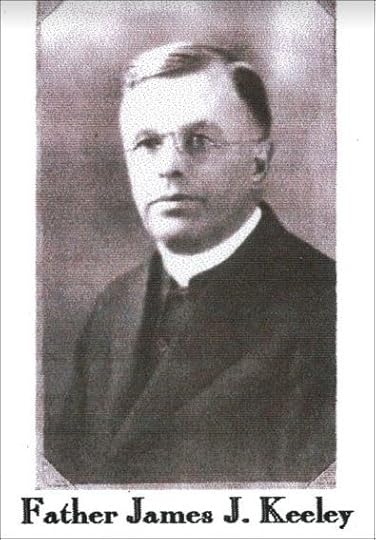
Father James Keeley – served St. Vicent de Paul from 1917-1926
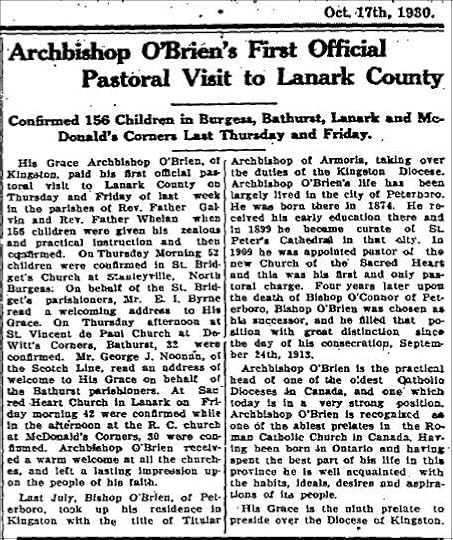
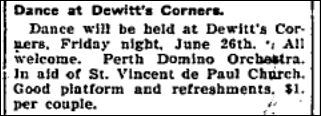
I recall that Father J.C. Le Sage was the Priest of the parish from 1952 through to 1976. Fr. Le Sage was well-liked, and a good friend to many of the local parishioners. He was known to be extremely intelligent, and it was widely believed that he had come from a very capable family. He had a reputation for being an excellent business manager, and ensured that the Church was in good repair.
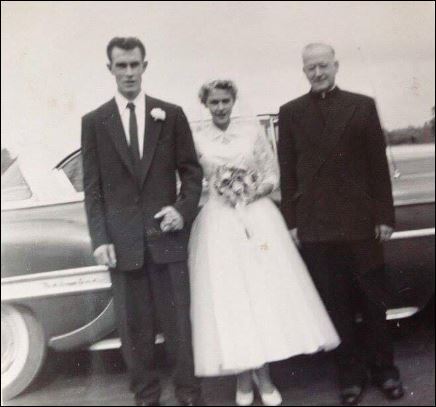
During his time serving at DeWitt’s Corners he hired an exceptionally talented Dutch painter who cleaned and restored the wood ceiling of St. Vincent’s, and painted the interior of the building. He was also instrumental in building a parish hall in Stanleyville (the Blessed Virgin Mary Parish Hall) to serve both parishes (St. Vincent de Paul in Dewitt’s Corners and St. Bridget’s in Stanleyville). Because of his excellent fiscal management, the total costs for the new hall were paid off quickly. Along with Fr. Le Sage’s sound business sense, an active Catholic Women’s League helped to raise money for the church, and assist with local charities.
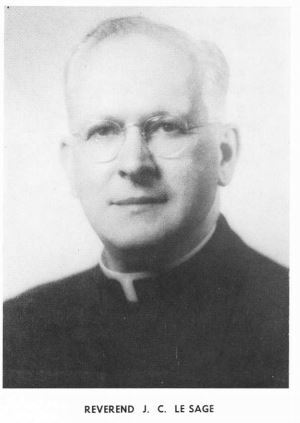
At the age of 67, Rev. Father LeSage suffered a heart attack at his home, near Stanleyville, and passed away on September 13, 1976.
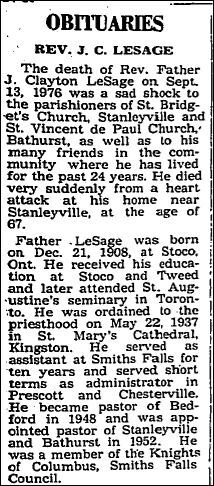

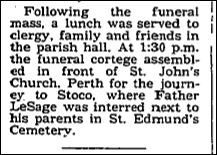
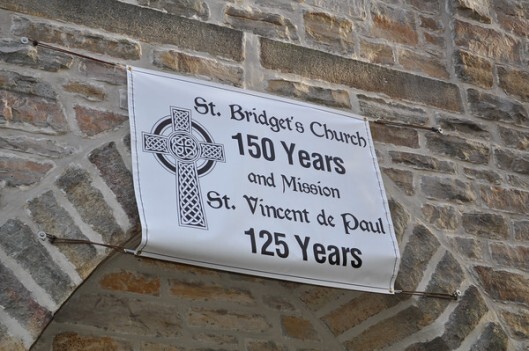
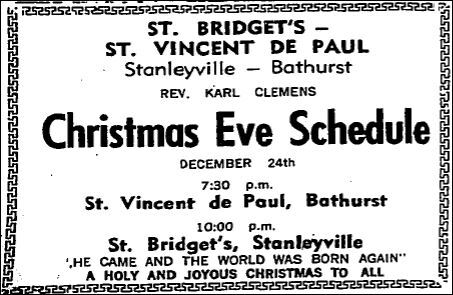
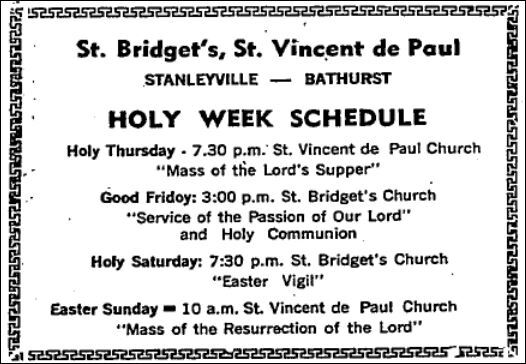
In 1979 the parishoners from DeWitt’s Corners and Stanleyville, sponsored a family of seven ‘Boat People’, who had fled their homeland for Canada.

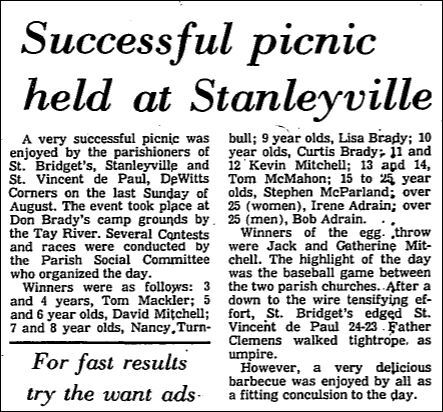

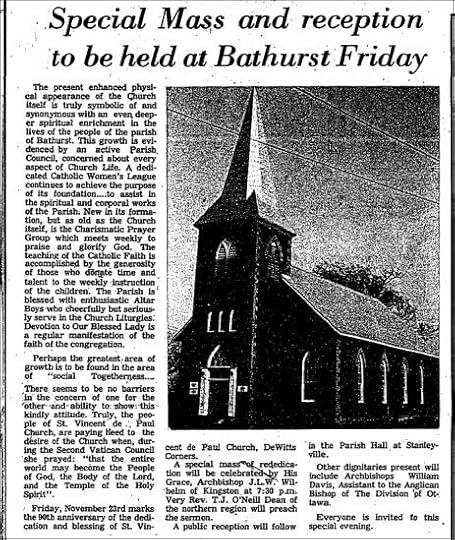
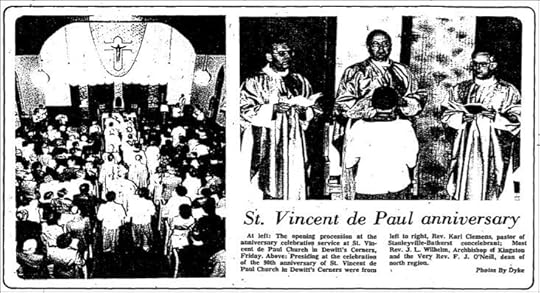
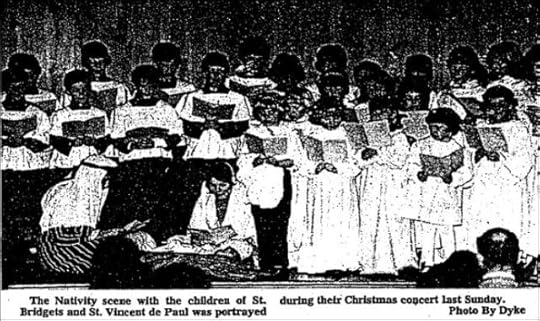
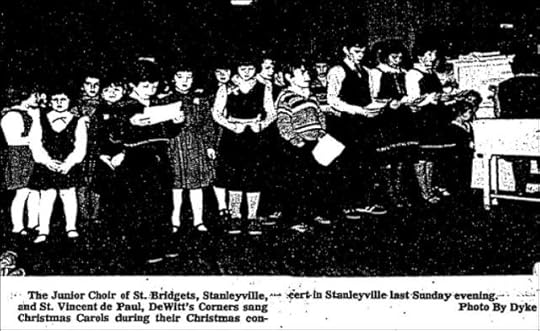

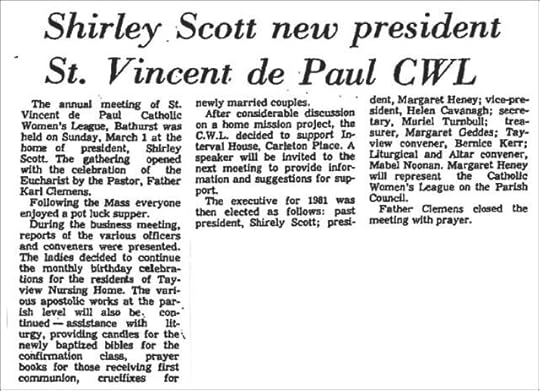
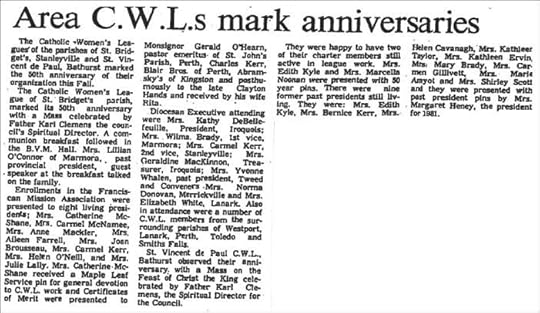
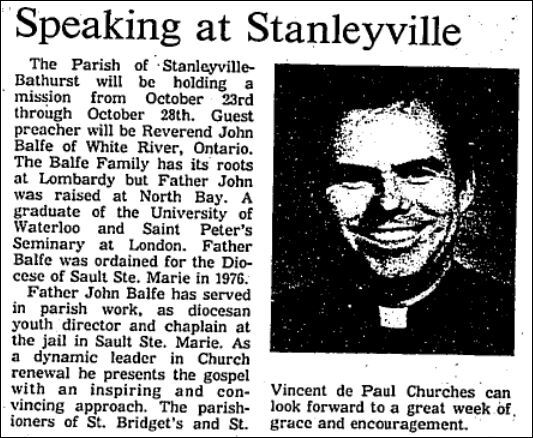
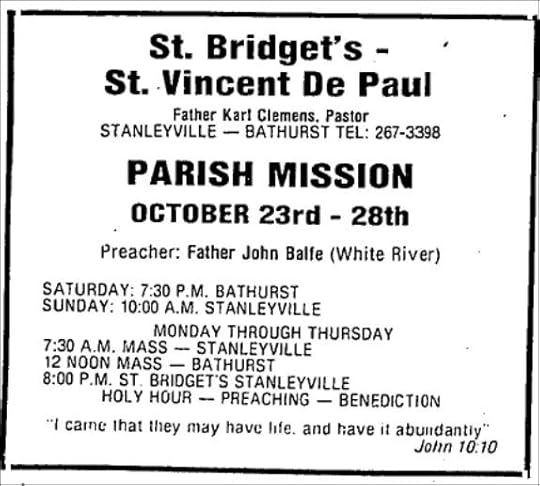 October 20, 1982 – Guest Speaker
October 20, 1982 – Guest Speaker
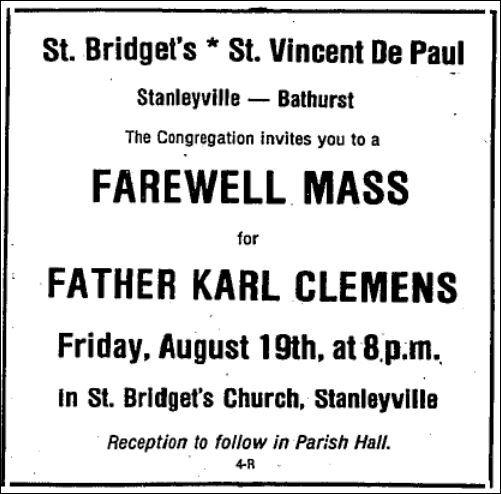
St. Vincent de Paul, the pretty red brick church at DeWitt’s Corners, has served the community for well over a century. Both residents and seasonal visitors from nearby cottages have found comfort and a sense of belonging, inside these stately walls.
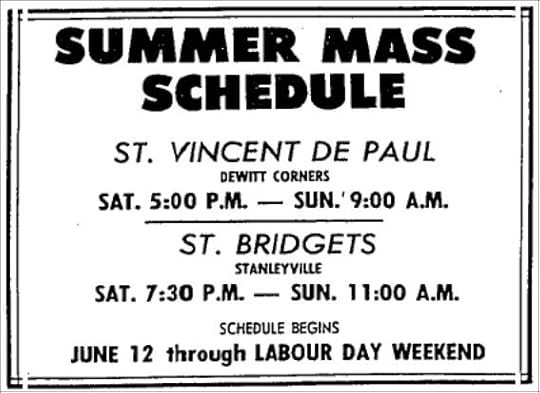
Many weddings, christenings, and funerals have taken place over the past hundred years, and to those of us who grew up in this neighbourhood, St. Vincent de Paul will always remain a memorable place, in our hearts.

…………
photo of St. Vincent de Paul church c. 1970s, courtesy of JoAnne Cavanagh Butlerphoto of wedding -Peter and Mary McNamee 1955 with Father LeSage – courtesy of Mary McNameephoto of wedding – Henry Hagan, to Anna Jackman Hagan, and photo of Father Keeley- courtesy of Richard FrizellFor more about the history and days gone by in DeWitt’s Corners:
‘Lanark County Classics: A Treasury of Tales from Another Time”…………
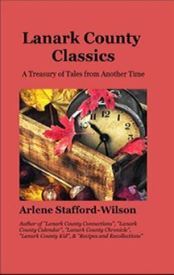
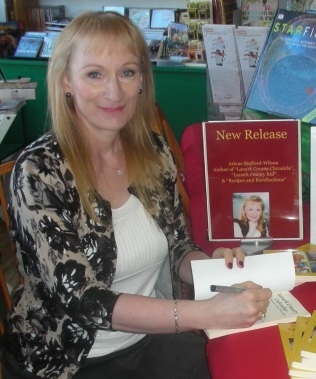
Arlene Stafford-Wilson
Member, Association of Professional Genealogists
Honorary Life Member, Lanark County Genealogical Society
Author of : “Lanark County Christmas”, “Lanark County Comfort”, “Lanark County Collection”, “Lanark County Calling”, “Lanark County Classics”, “Lanark County Connections”, “Lanark County Calendar”, “Lanark County Chronicle”, “Lanark County Kid”, & “Recipes & Recollections”
April 13, 2023
Chaplin’s Dairy in Glen Tay
Whenever I saw the big white and pink Chaplin’s Dairy truck pull into the yard, I had only one thing on my mind; and that was their delicious chocolate milk. It came in small pint-sized glass bottles, and had a round, waxed cardboard cap on the top to seal it in. The cap had a little tab, so that you could pull it off of the bottle, and the pint bottle was the perfect size for small eager hands. After the cap was off, I was just seconds away from tipping the bottle and tasting the richest, creamiest chocolate milk ever produced.
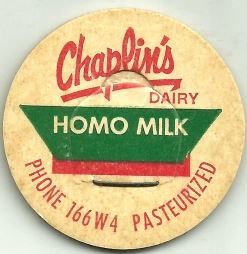
Our Dad worked for Chaplin’s Dairy for decades. He drove one of the big pink and white trucks, and had a regular ‘route’ of customers in Perth. He used a big, black, metal carrier to transport milk from the back of the truck to the customer’s front door. The carrier had eight slots, and each slot held a quart bottle of milk. He also had a book of order slips. It was a small, thick pad of paper about three by six inches, stapled together at the end. There was a top sheet that was numbered, a small sheet of carbon paper under that, and a blank sheet at the bottom. On the top copy, Dad wrote the customer’s name, address, and what they had ordered, along with the total price and that was the customer’s copy. Because each order was written on top of the sheet of carbon paper, the Dairy had a carbon copy underneath for their records.
Once in a while Dad would bring me to the Dairy and I was fascinated to see the many steps that the milk went through in order to end up on someone’s table. It was fun to sit in the big truck so high up, and the ride was very different from our car at home. The truck bounced up and down a lot more, and made a lot of noise, as we drove down the lane, and up the third line toward Perth. It was neat to look outside, and see how much lower the other cars were on the road. Every time we’d go over a bump or hill the truck would bounce again, and of course there were no seat belts in those days, so it was quite exciting.
We’d drive along until we could see Nick and Doreen Webber’s house at the corner, and we’d begin to slow down. Just a bit past Webber’s house we turned right, and Chaplin’s Dairy was a small building on the right side of the road, just up from the corner at Glen Tay.
We’d park the truck, and I would follow Dad into the Dairy. As soon as he opened the door I could see all of the steam in the air. It was really, really, humid. The inside of the building was grey and concrete and the floor was always wet. Sometimes we’d see one of the Chaplin brothers Cameron or John, and they always wore big rubber boots and the steam rose up all around them.
Because the milk came in glass bottles in those days, a lot of the steam was produced from the big machine that they used to sterilize the bottles. When the customers were finished with their milk, they would rinse their bottles (hopefully!), leave them on their doorstep for Dad, and he would bring them back to the Dairy that evening. John or Cameron Chaplin would take the empty bottles and put them through the bottle washer. The bottle washer washed, rinsed, sterilized, and then rinsed again, so the bottles were sparkling clean and ready for the next batch of milk.
The next machine filled the bottles, then capped them with the little waxed cardboard caps. There was a large room toward the back of the Dairy, and that was a cold storage room, where the freshly bottled milk was kept. Most of the time when I visited I saw them bottling homogenized, 2 per cent, skim, and chocolate milk. Sometimes, one of the Chaplins, would hand me a pint bottle of chocolate milk, right off of the filling machine. I would gladly accept, and thought to myself that if Mother was here she would say that I was going to spoil my supper. Dad never said anything though, because he knew how much I loved Chaplin’s chocolate milk.
Chaplin’s Dairy was a family business. The dairy was started by Delbert Chaplin in the early 1900s, and his brother Edgar Chaplin also worked in the business. The Chaplin family owned a large 300 acre farm at R.R 4 Perth and Delbert demonstrated his ingenuity by setting up a method to process their milk from their Holstein herd. At first he operated the business from their farm, but later in 1935 he built the Dairy building at Glen Tay corners.
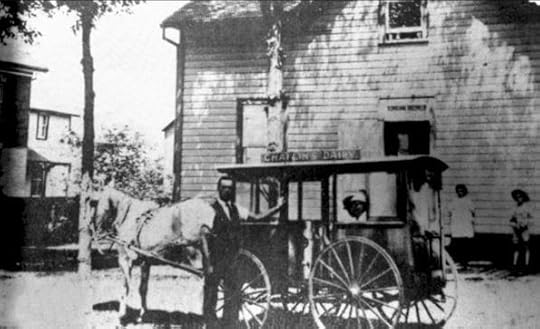
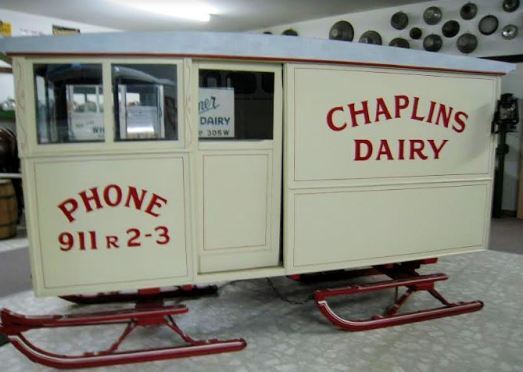
When Chaplin’s Dairy began to deliver milk from the new location at Glen Tay, the quarts of milk were just 5 cents each, and it was delivered by horse and wagon. The milk was not bottled at that time but was distributed to the customers from a large tank at the back of the wagon. The customer would leave a container on their front step or front porch, and Delbert or Edgar would ladle the milk out of the larger can with a pint or quart measure.
The Chaplin farm was producing an average of 3,000 quarts of milk per day and John, Cameron and their brother Don processed the milk and delivered it in the Perth area.
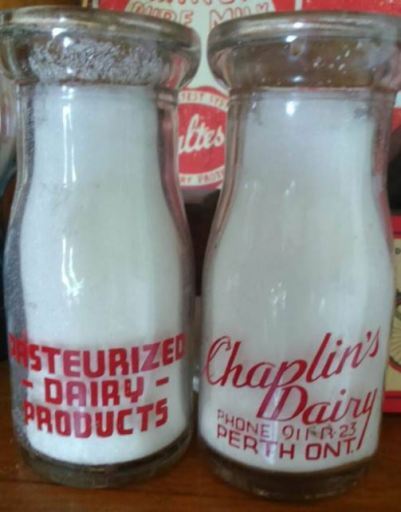
The demand for their milk increased, and they expanded, and made arrangements to have five neighbouring farms supply their business with additional milk. They were also producing chocolate milk and buttermilk at that time. They made butter as well, but only to supply their own families and it wasn’t for sale to the public.
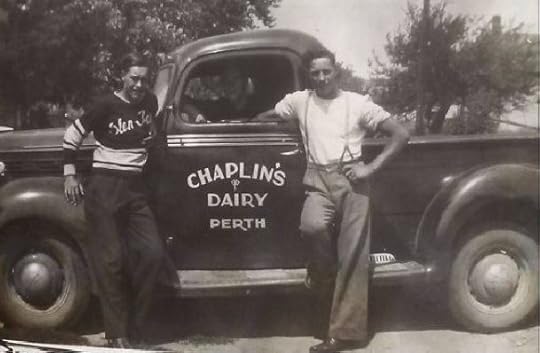
By 1945 the sons had taken over the dairy farm and Don took on the responsibility of managing the farm, but their father continued to be active at the Dairy. They continued to expand their business and operated for many decades. They expanded their product line to include grape juice and orange juice.They were successful and respected in the community and were known for their high quality products throughout the Perth area.
Memories of Chaplin’s Dairy:Tim Stafford: ” When I turned nine, Mom told Dad that she could no longer put up with me on Saturdays because of my bad behavior. That’s the ‘how and why’ of me working with Dad, on the milk truck for Chaplin’s Dairy.
I wasn’t much help at first, but he gave me fifty cents and a chocolate bar purchased at McGlade’s service station, on Gore Street.
Later, when I got my driver’s license, John Chaplin hired me and another high school student, Don Lindsay, to do his milk route, and the Christie Lake cottage route, while he covered the other routes and the ‘inside’ workers for summer vacations.
We were making $25.00 a week, plus we were expected to eat at the restaurants we delivered to on a rotating basis. The daily meal was paid for by Chaplin’s Dairy. John Chaplin’s favourite restaurant was Wong’s Chinese, but Don and I preferred ‘The Bright Spot’, where Muz MacLean, Hillis Conroy’s son-in-law worked. We usually ordered grilled cheese, french fries, and cokes.”

Roger Stafford: “I am not positive, but I believe I was about 12 when I started working Saturdays and summers with Dad on the milk truck. The first Summer I worked with Dad, our brother, Tim, was working with Grant or Gary Chaplin.
They were delivering to the stores and restaurants in Perth, and to summer camps and cottages. They drove to Christie Lake to deliver to Cavanagh’s (general store) and the Lodges (Norvic Lodge and Arliedale Lodge) . I believe Tim had been Dad’s helper on the milk truck, prior to me starting to work with Dad.
We used to be at the dairy by 7:00 a.m., and usually got home between 17:30 and 18:00 in the evenings. When I first started with Dad, we delivered milk out of the back of a pickup with a tarp over the glass bottles to protect them from the sun and cold. Milk was 23 cents a quart bottle, and 25 cents for chocolate milk. We also had pints and half pints in glass bottles. Whipped cream and buttermilk were also carried on the truck. It was not long after I started that we used an enclosed truck to deliver out of. It was much easier, but it had no air conditioning, and a piss-poor heater. When I worked six days a week in the summer, I earned $6. for the week.”
In 1970 Don decided to sell the farm and a few years later in 1974 John and Cameron made the decision to stop processing the milk themselves and just be distributors. In total, John worked for 42 years in the business and Cameron for 30. At that time Chaplins were one of the last small dairies that still processed their own milk. They began to sell milk for Clark’s Dairies in Ottawa. John felt that there were too many changes taking place at that time and that the cost would be too prohibitive to continue processing their own milk.
The milk industry in the 1970s was changing from glass bottles to paper cartons,although most customers preferred the taste of milk in glass bottles. The process of returning and washing the bottles was becoming too time consuming, and too expensive. The federal government was also insisting that businesses use the metric system. This conversion would have meant purchasing new equipment because their milk was sold in pints and quarts, and they would have to begin selling in litres.
At the point in time when John and Cameron decided to sell the business, they had 1,000 customers, and a modern fleet of trucks, doing 12 runs per day, with four salesmen. They also offered a complete line of dairy products which included cottage cheese, eggs and also several types of juice. Their last delivery was made by Cameron, on Sept. 17, 1977 and their milk at that time, was 65 cents a quart.
Chaplin’s Dairy was sold that year to Bill McConachie. Bill was formerly a driver for many years who brought the milk from Ottawa. His plan was to begin delivering milk to Smiths Falls, to increase his market.
It’s likely difficult for the younger generation to believe that milk was delivered door to door each day, or that it had no expiry date stamped on the bottle. The milk was fresh from the cow either that day, or the day before, processed at Chaplin’s Dairy, and delivered right to your door step. There was no need for an expiry date. It’s also interesting that they managed to have a pretty successful recycling process of sterilizing the bottles and getting them back on the trucks by the next morning. That was all accomplished without ‘blue bins’ and recycling plants.
Did the milk taste better in a glass bottle? Yes, it did; and anyone who has drank it from a bottle will tell you the same thing. We certainly drank enough of the stuff at our house to offer an opinion on that. One of the benefits of having your father work as a milk man is that he brought home enough milk for the family, each night, in his milk carrier. When you are raising five children, that’s a lot of milk. We were fortunate to have had such fresh milk each and every day and we never ran out.
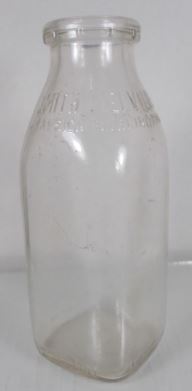
Although the work wasn’t easy, I believe that Dad enjoyed his customers in Perth, and the quick chats had each day. Whenever Mother and Dad shopped at the IGA on Wilson Street, customers from his milk route would often come up to say ‘Hello’, and exchange a few words. Dad was well liked, and at Christmas his customers showered him with gifts. He received many, many boxes of chocolates, packs of cigarettes and one and two dollar bills in lovely Christmas cards. He was always late getting home Christmas Eve, and part of the reason was that his customers took a few extra minutes to wish him a Merry Christmas, and give him their gifts.
We were fortunate to have grown up at a time when there were family businesses, producing high quality products, and selling them door to door. At one time we had a milk man, an egg man- (Mr. Greer), and a bread man, delivering right to our door.
As the years passed by, many of the small family businesses have closed down, one by one, and in many cases our products are produced far away by people we don’t know. There are dates stamped on the products now telling us when they are destined to ‘expire’. We often have no idea what processes are used to make some of the things that we eat, and so we purchase them on faith alone. Gone are the days when we always knew what we were eating, and even knew the people that made the goods.
Now, we are left with the memories of Chaplin’s, our small, local dairy in Glen Tay. It was a place where we could stop by for a visit and be greeted by John, Don, or Cameron in their big rubber boots, clouds of steam rising all around them. With a big smile they’d pluck a pint of chocolate milk off of the line, and hand it to a little girl from down the road. Their products were made with pride and care, and they were confident that their customers would be satisfied. For years, Chaplin’s Dairy was a well known business in our community, and their products were enjoyed in Perth and area homes for many, many decades.

Arlene Stafford-Wilson
Member, Association of Professional Genealogists
Honorary Life Member, Lanark County Genealogical Society
Author of : “Lanark County Christmas”, “Lanark County Comfort”, “Lanark County Collection”, “Lanark County Calling”, “Lanark County Classics”, “Lanark County Connections”, “Lanark County Calendar”, “Lanark County Chronicle”, “Lanark County Kid”, & “Recipes & Recollections”
(excerpts from ‘Lanark County Kid: My Travels up and down the Third Line’)

